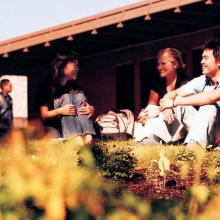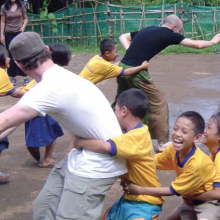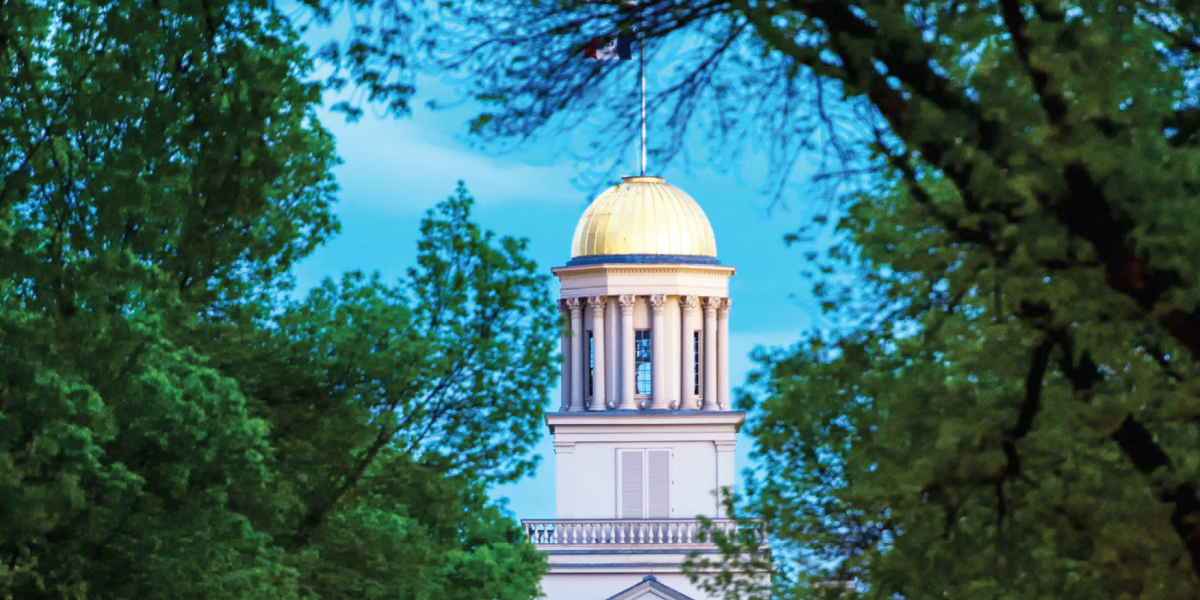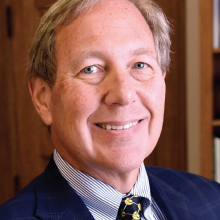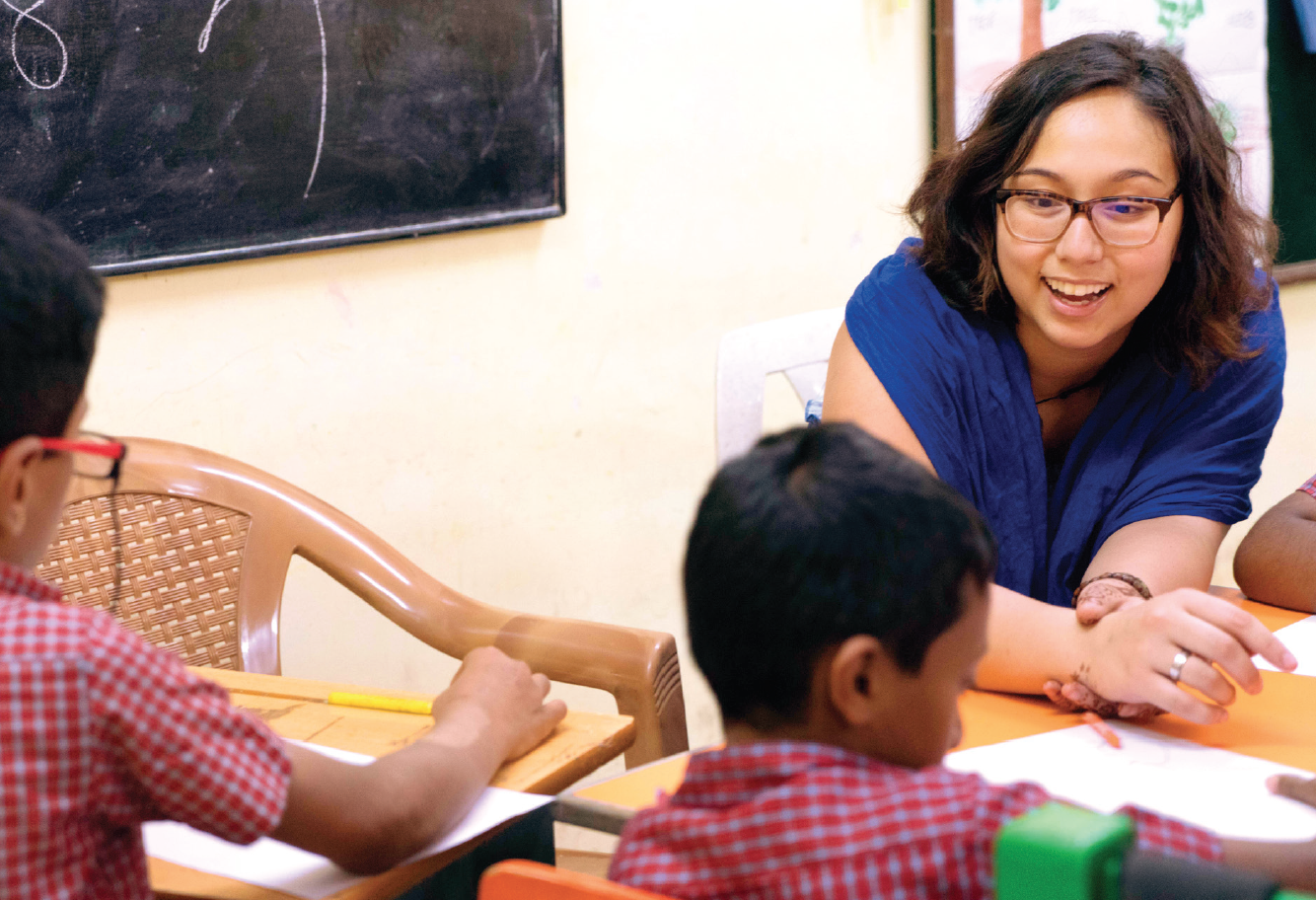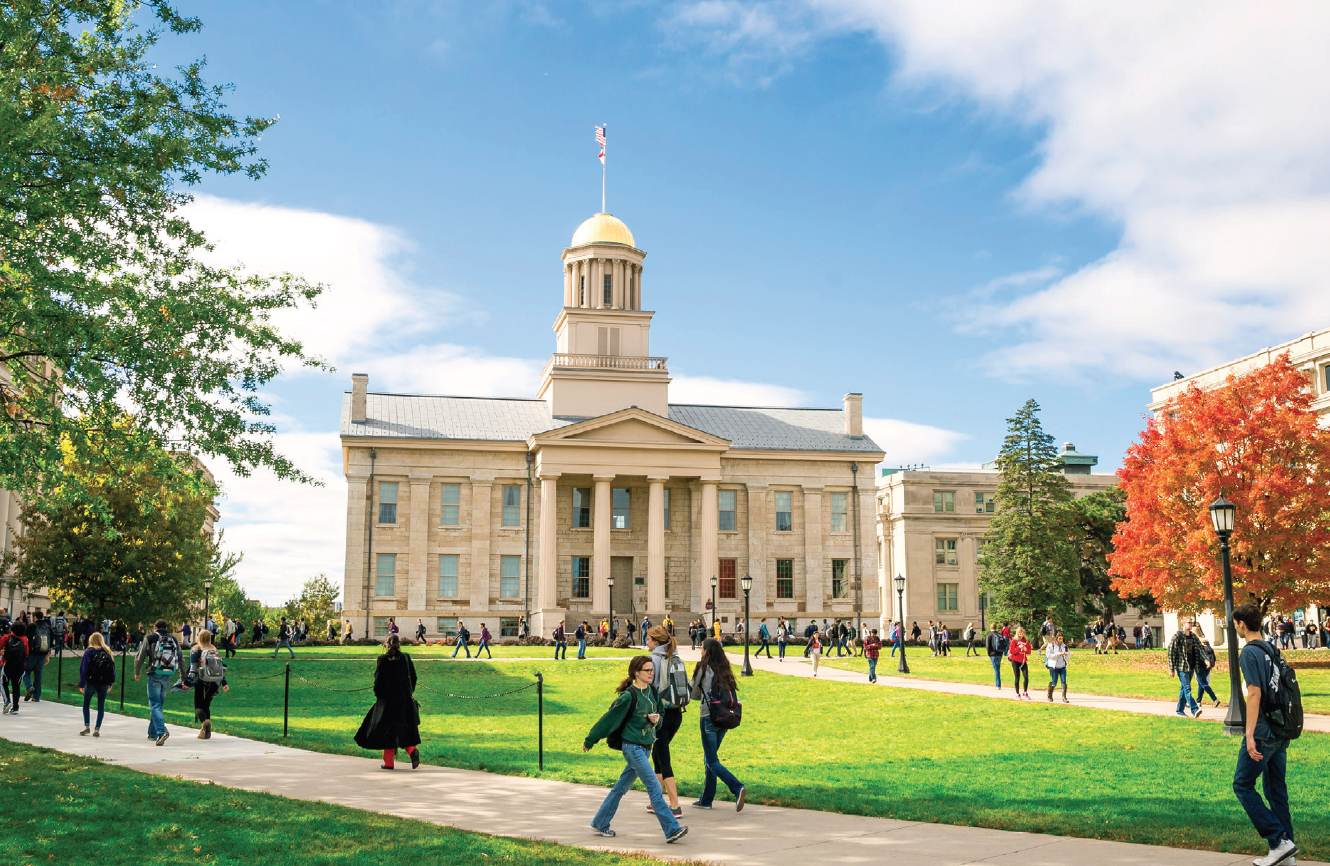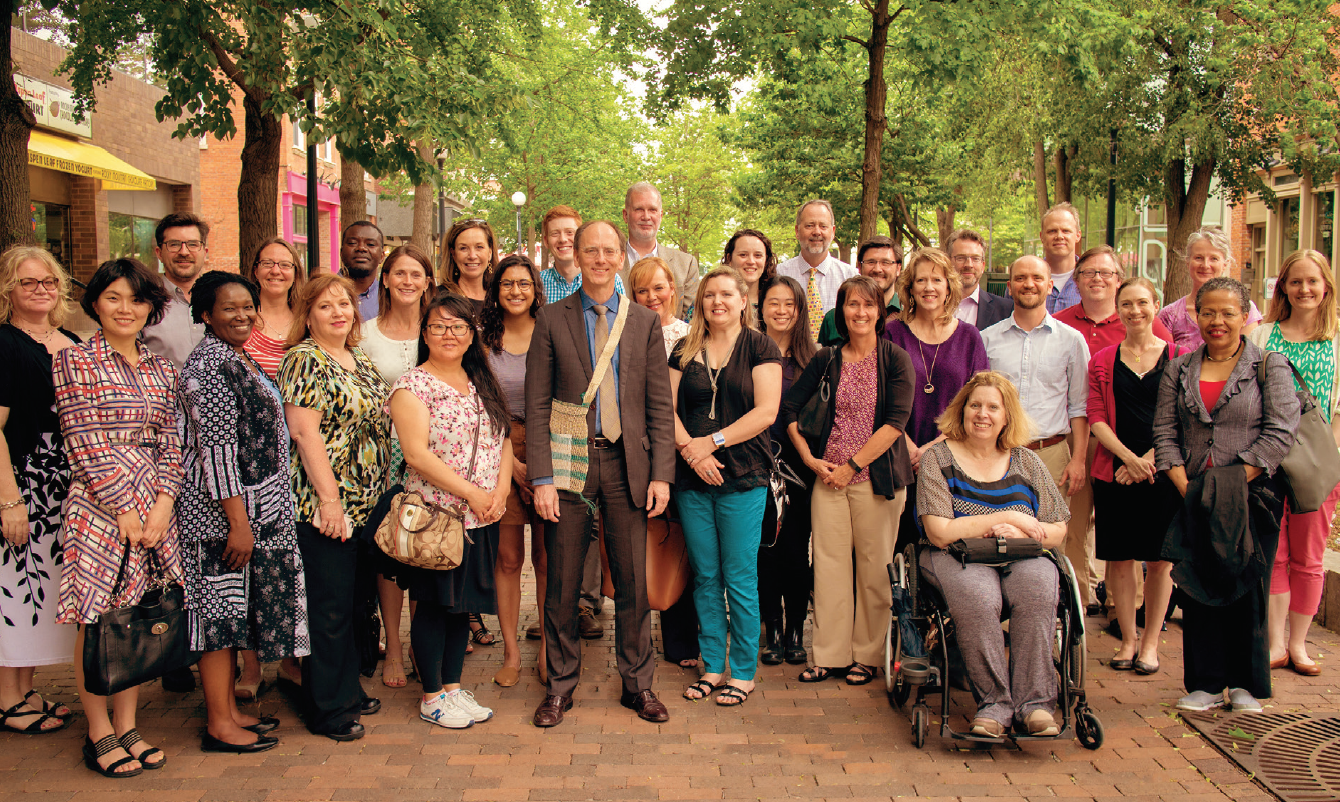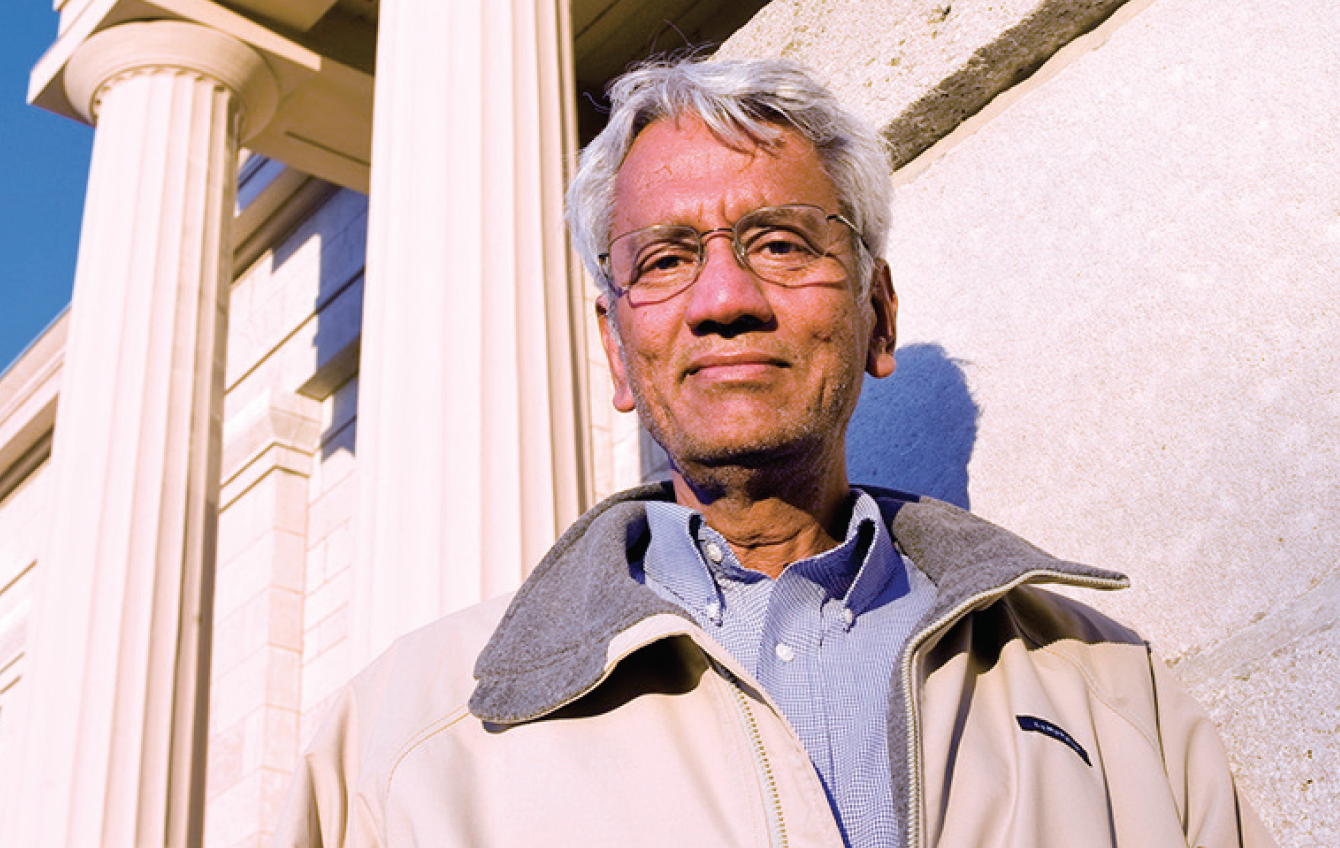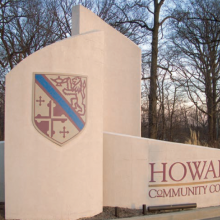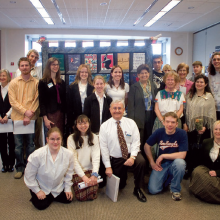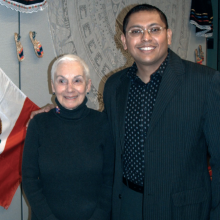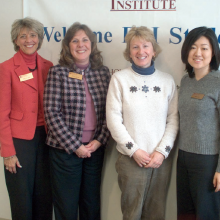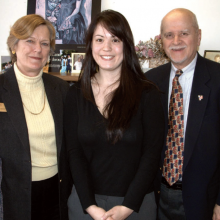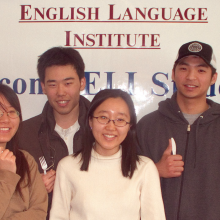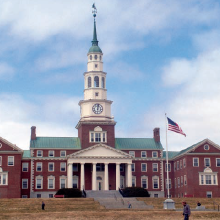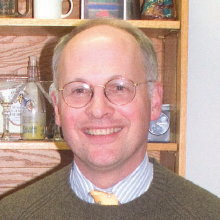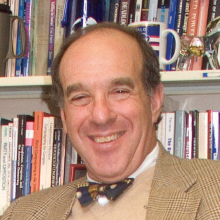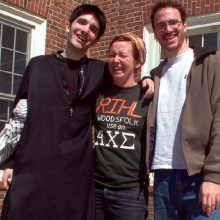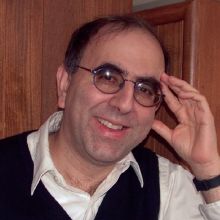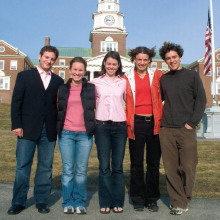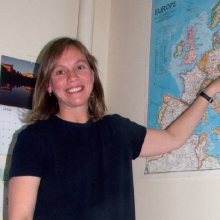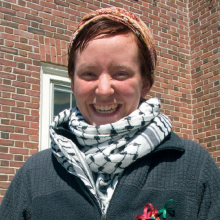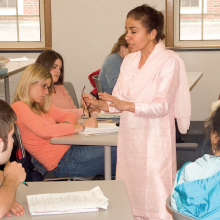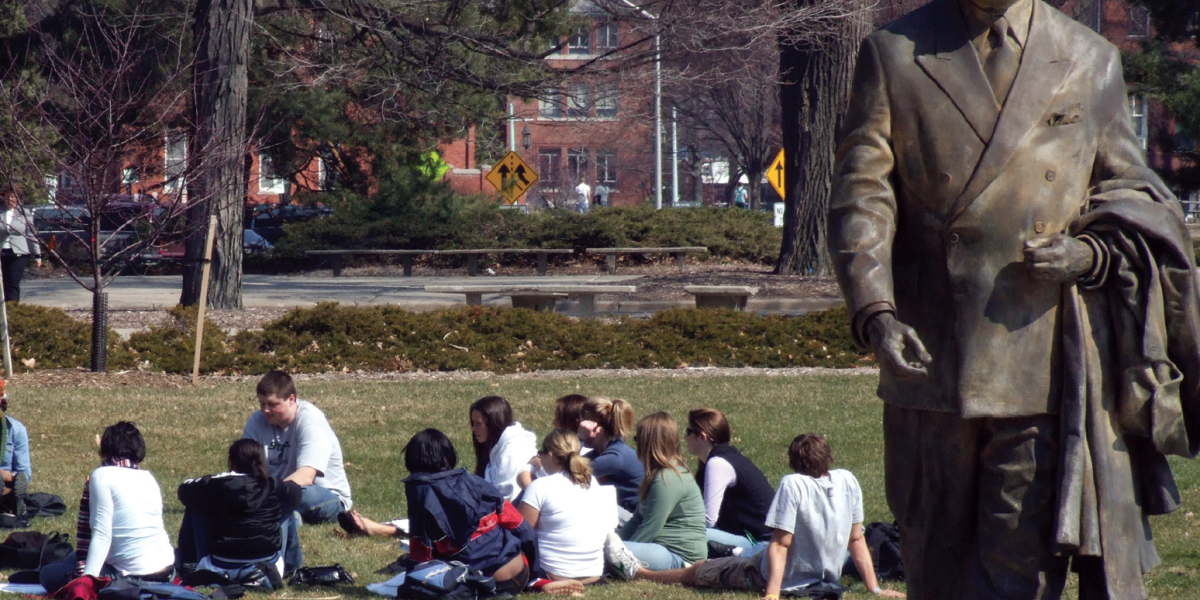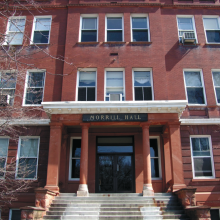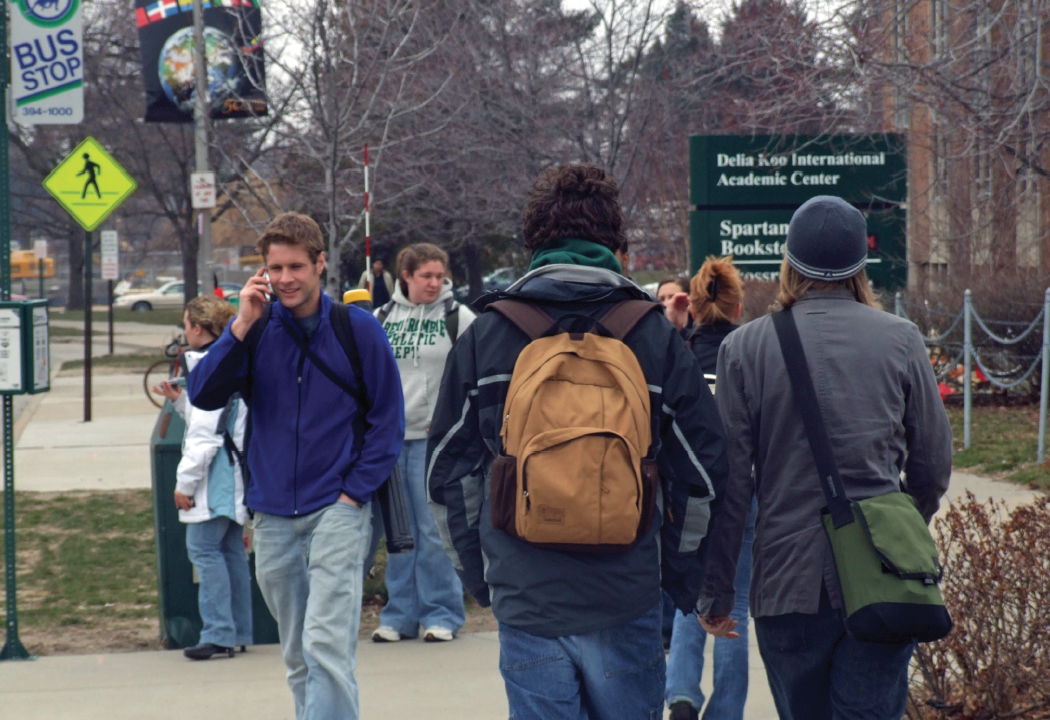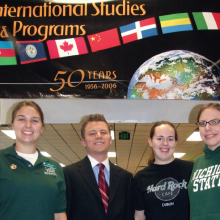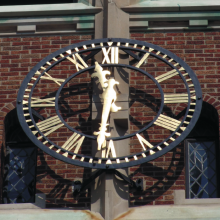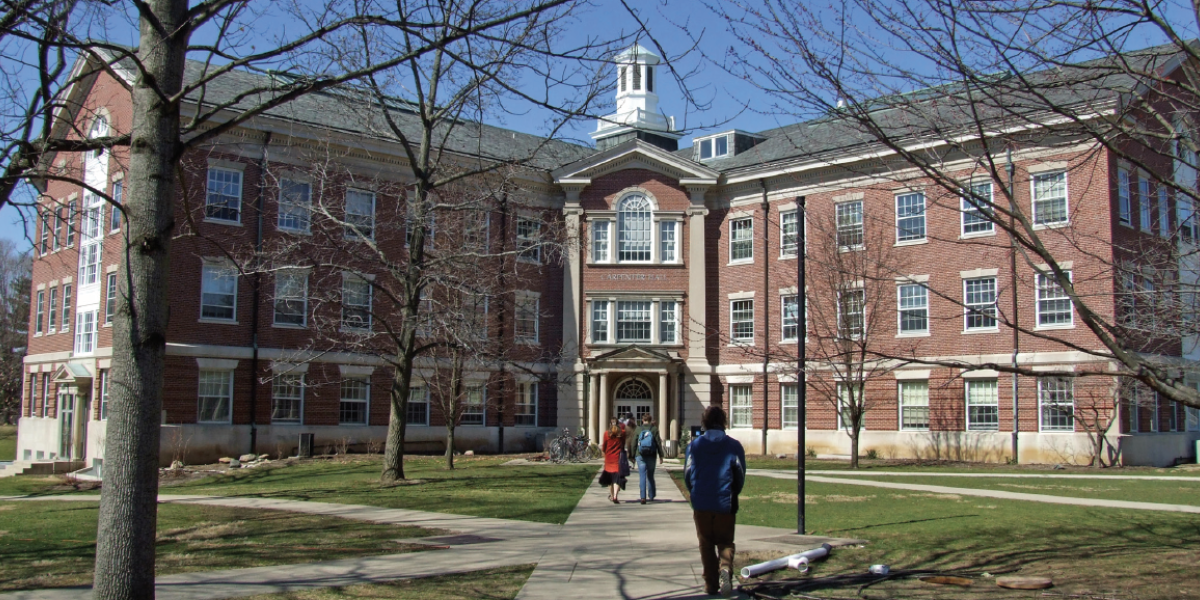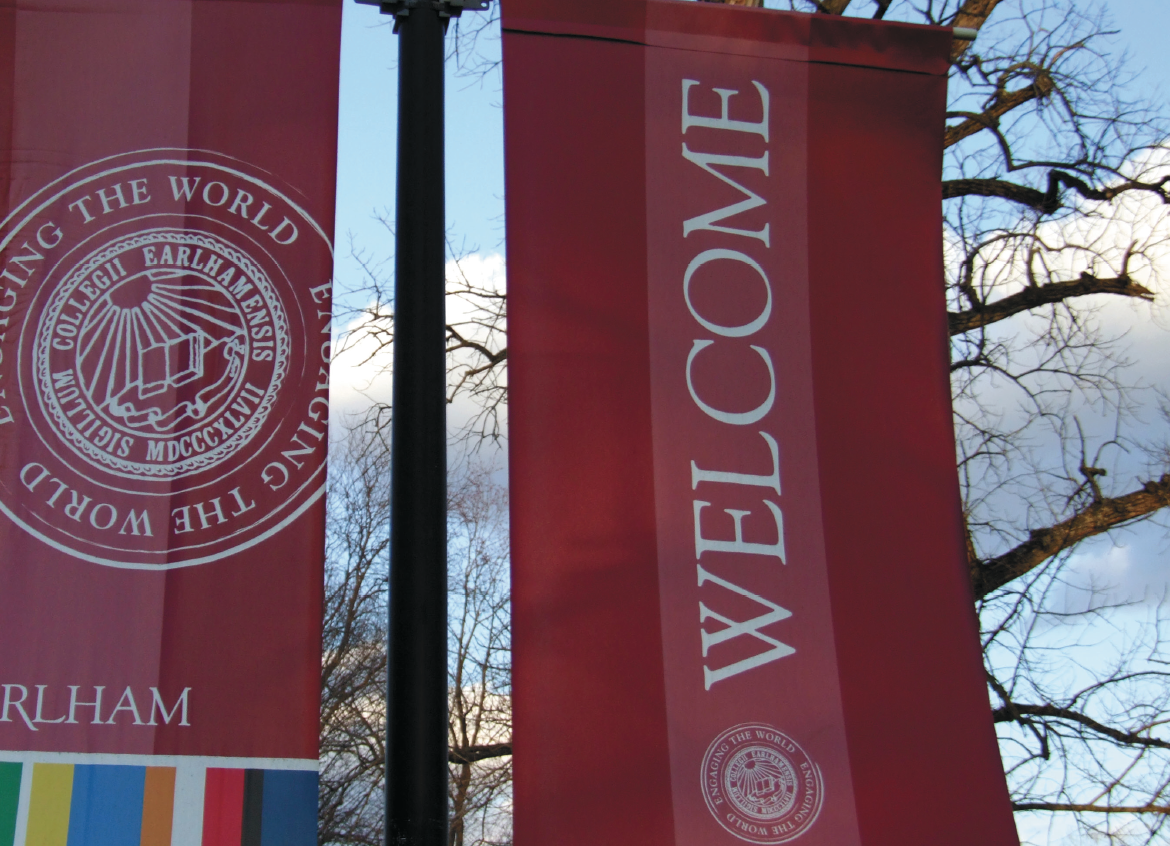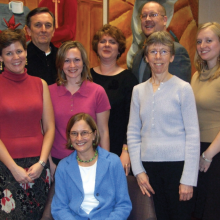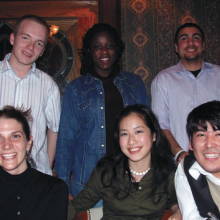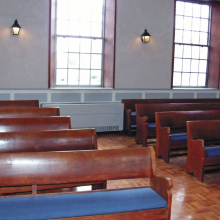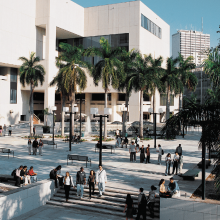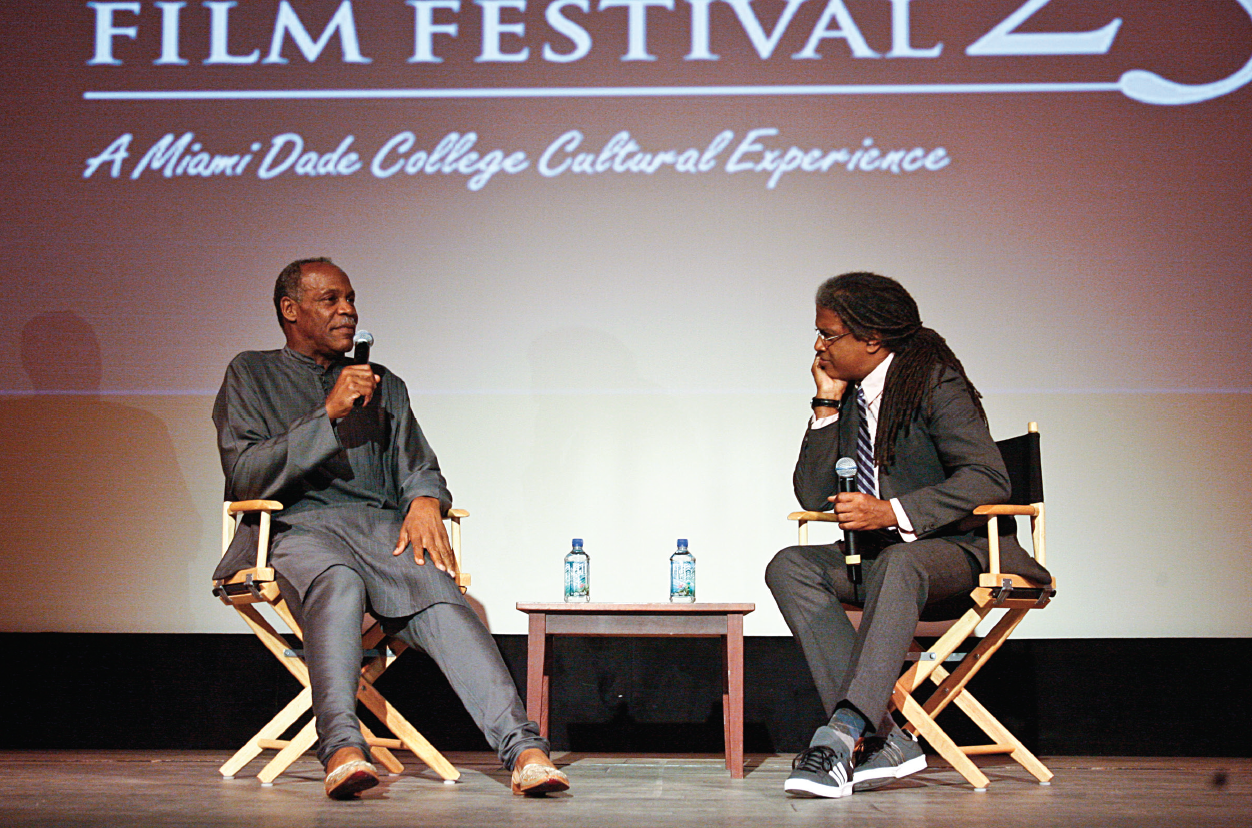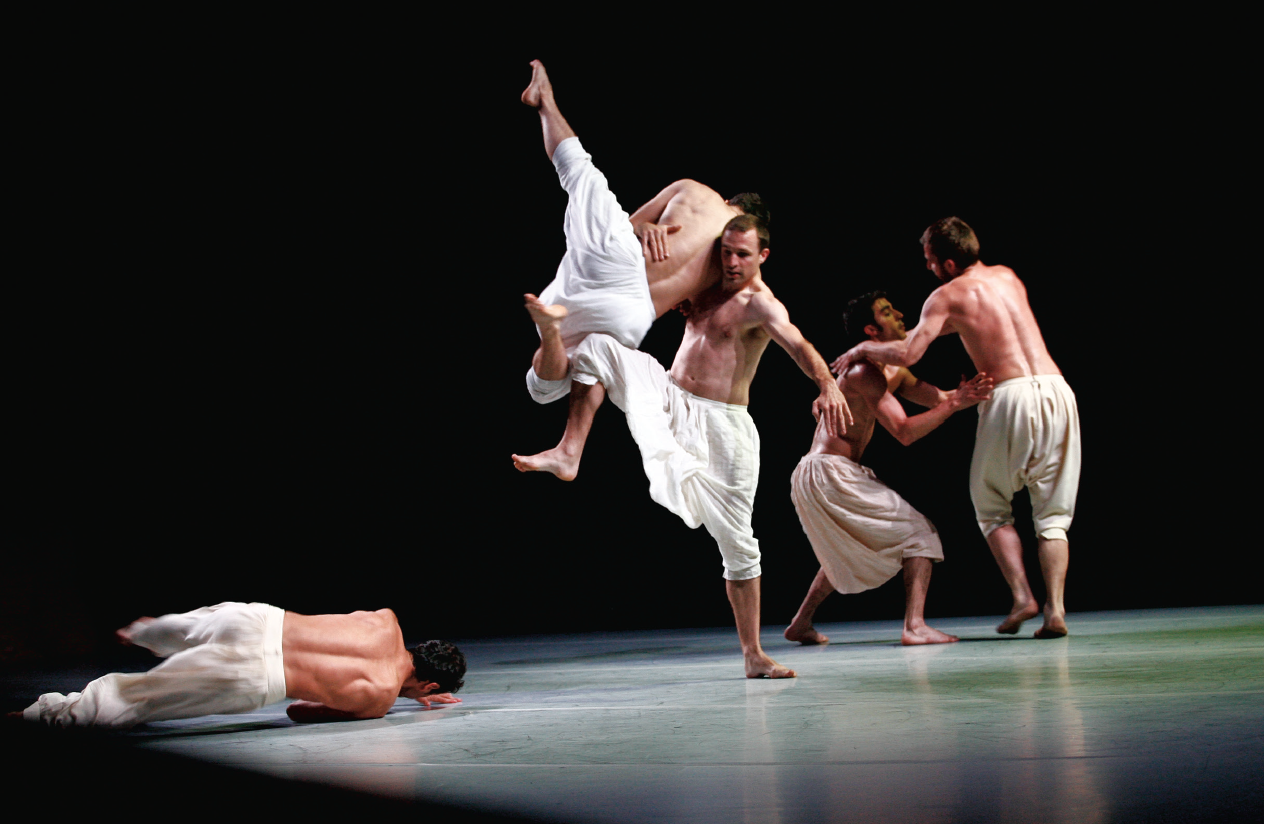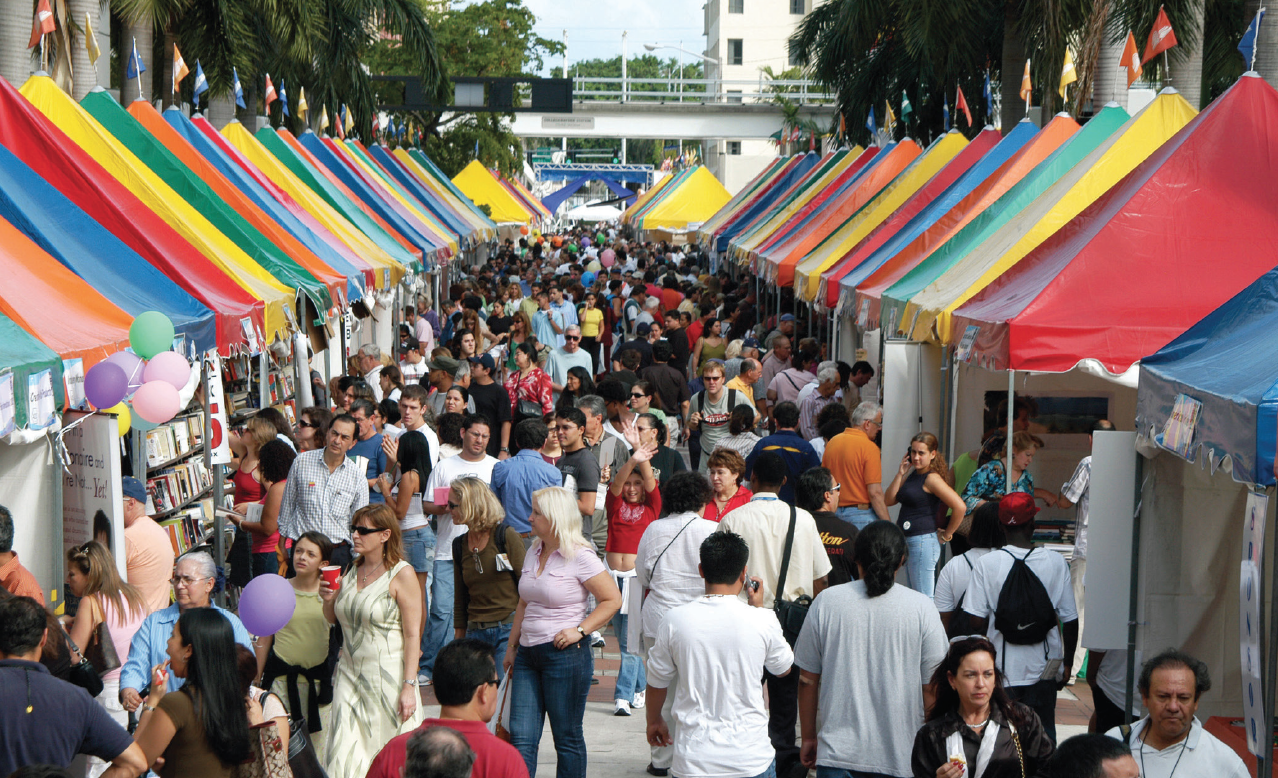Inclusion and Equity
Intercultural Communication in Practice
2007 Spotlight Shoreline Community College
When Shoreline Community College was built in a Seattle suburb 10 miles from the Space Needle in 1964, the wooded, 83-acre campus was designed to look like a Japanese botanical garden. The student union, the PUB, was an acronym for Pagoda Union Building, and until the 1990s its sports teams competed as the Shoreline Samurai. That nickname was abandoned after student leaders decided it was demeaning, and today Shoreline athletes take the field as the Dolphins.
But Shoreline itself is more international than ever, with a record 643 international students enrolled in 2006-07 and scores of students along with faculty studying overseas each summer. Many of these ambitious programs were spawned by an initiative the college took in 2001 when it created an International Programs Advisory Committee (IPAC) with an annual purse of $20,000 to disburse grants to faculty to develop short-term study and service abroad projects. That next summer, faculty led dozens of students on three-week study trips to Antigua, Guatemala; Monterrey, Mexico; and London, England. Every summer since then, 45 to 70 Shoreline students have headed off to earn credit in China, Japan, Ireland, Greece, Turkey, Namibia, South Africa, Thailand, Honduras, Peru, Argentina, Iceland, and elsewhere.
Through Shoreline’s membership in the Washington Community College Consortium for Study Abroad, students also can take classes during the fall, winter, and spring in London, Florence, Paris, Salamanca, and San Jose, Costa Rica. From 1999 through 2006, 120 Shoreline students studied abroad through the consortium, and three Shoreline professors taught classes overseas.
In a region replete with excellent community colleges, Shoreline must scramble for students, despite its excellent track record in sending graduates to the University of Washington for four-year degrees. The commuter college, two miles inland from Puget Sound, is the tenth largest of Washington’s 34 community colleges. In addition to awarding associate degrees in arts and sciences, it prepares students for careers in health, technology, and computers and has an award-winning automotive training center. Most of the international students who make their way to Shoreline seek to transfer to universities, says Thalia Saplad, executive director of the Office of International Programs. “For international students, business is number 1. Our engineering, health occupation, and nursing programs are also draws, as well as biotechnology.” Many international students come from Asia, with the largest numbers from Indonesia, Hong Kong, Korea, and Japan.
After two presidents departed in four years, Shoreline found stability when civil rights attorney Lee D. Lambert was promoted in 2005 to interim president and later given the job on a permanent basis. Through it all, support from the top for Shoreline’s internationalization was unwavering. The commuter campus earmarked $85,000 in 2005–06 and another $85,000 in 2006–07 toward internationalization projects, including grants for faculty development, study abroad scholarships as well as improved services for international students. “The administration is very supportive of building programs and curricula that prepare our students to be global citizens,” says Saplad.
Praise from Accreditors
The Northwest Association of Schools and Colleges and Universities commended Shoreline in 2002 for “its excellent international studies program.” The visitors left “impressed by the exemplary and creative efforts to recruit and accommodate international students and to use resources from the success of that program to encourage faculty and students to travel and study abroad.”
A 10-person staff works on international programs and advises the growing ranks of students from around the world. “We’ve made a concerted effort in the past several years to integrate our international education programs and our international students with the rest of the campus,” says Saplad. “More and more international students have taken leadership positions in our student government. They hold eight of the 12 executive offices this year.”
International Peer Mentors
Mari Kosin, assistant director of international student services, laid the groundwork for the emergence of international students into leadership positions with a program she started five years ago called International Peer Mentors (IPM). Five students are selected annually for these paid positions, in which mentors help newcomers to the United States adjust to life at Shoreline and in the Seattle area. The mentors take diversity training alongside full-time college staff and help shape both educational and extracurricular activities for their peers.
“They play a major role in our orientation for international students,” says Saplad. “They’ve helped get more international students to partake in activities and to get more involved in their education. They undergo professional development with my staff and we send them to conferences around the state. It’s the first time in years where international students have really seen themselves as part of the institution.”
Colleen Ferguson, assistant director of international education, said the first international students to run for campus-wide office were veterans of the International Peer Mentors program. “They learned a lot about the institution and how it worked. They had the confidence to apply for posts in student government because they had held these IPM leadership jobs for a year,” she says.
An Exploration of Irish Literature and Culture
The International Programs Advisory Committee, which includes two Shoreline students, two staff members, and a broad representation of faculty, sifts through faculty proposals for summer study abroad courses and decides which ones to fund. Gary A. Parks, a professor of English literature and creative writing, received a green light from IPAC to take creative writing students to Ireland in August 2006 to explore the sources of inspiration for W.B. Yeats, James Joyce, and other authors and to craft stories of their own. In addition to viewing the Book of Kells in Trinity College in Dublin and standing before the majestic Cliffs of Moher jutting into the Atlantic off County Clare, they attended a poetry slam at a pub in Galway and worked up sketches about life in nineteenth century, famine-stricken Ireland while visiting Inishmore, birthplace of novelist and activist Liam O’Flaherty.
“The driving query of the class was that I wanted people to explore the question of why such a small nation has produced so much great literature,” says Parks, who has taught at Shoreline for 16 years. Six men and two women, all 21 or younger, signed up for the course, which cost $2,400 plus $600 for meals. Given a choice of taking an introduction to Irish literature or a short story writing class, all opted for the latter, “which simplified things for me and made it a bit more fun,” he says.
He had students read excerpts from Mackin’s 1955 novel, Rain on the Wind. “We did the Yeats pilgrimage to Sligo, and visited Inishmore, an island in the Gaeltacht off the west coast of Ireland,” he says. “A lot of native speakers there still speak Irish. Liam Flaherty’s stories get mystical in places, and when you read them on Inishmore you can really understand how this place would give rise to these stories.”
“It was a great experience,” says Parks. When the students came home, half signed up for an Irish literature course that he inaugurated at Shoreline that fall. “That class filled up with 27 students. It was a nice follow-up in terms of internationalizing the campus,” he says.
Service Learning in Jamaica
One of the most frequent fliers on Shoreline’s faculty is psychology professor Robert B. Thompson, who regularly leads students on a 16-day summer service learning trip to the Blue Mountains of Jamaica, where they volunteer in the schools of a rustic village. Thompson worked as a psychologist alongside the Peace Corps in that same village two decades ago and has returned with students ever since, first while teaching at Rollins College and over the past 13 years at Shoreline.
“It’s a village without electricity only 25 miles from downtown Kingston, but very difficult to get to. We have to go up the mountain by four-wheel-drive truck,” he says. “The students live at the houses of two coffee farmers and work within the community, primarily tutoring in two elementary schools.” Thompson twice has spent six-month sabbaticals in the Blue Mountains and returned to campus in 2006 determined to help the Jamaican farmers secure a niche and better prices in Seattle’s food markets for their rich coffee beans.
“I recruit the students out of my psychology classes,” says Thompson. “They are very diverse. On this summer’s trip, 75 percent have never before traveled outside the Northwest. It’s a unique opportunity for them. I have three students over age 50, several in their 30s and 40s, and students who are 18, 19 years of age.”
Both Thompson and the students find the readjustment upon return to Seattle challenging. “You’re bombarded with the technologies, the lights, noises. Everybody’s in a hurry. Once you get accustomed to a certain rhythm, it’s very difficult to come back and be thrown into another culture,” he says. “The students see their culture and their surroundings in a different way.” Some, he adds, change career paths so they can deal directly with the poverty they saw in the Blue Mountains.
A Commitment to Multicultural and Global Awareness
Thompson, who served on the IPAC for four years, says Shoreline “definitely is an unusual community college. A lot of four-year schools don’t support the type of unique (study abroad and international service) programs we have.”
Parks said the emphasis on the international at Shoreline fits in with its “tradition of being a strong academic transfer school. It’s just part of our history and culture here. We have a commitment to multicultural awareness and global awareness.”
Shoreline’s summer study abroad programs are open to all students and members of the community, although traditionally they have drawn primarily those on track to transfer to a four-year institution. The Office of International Programs now is stepping up efforts to interest more of the students who are seeking technical and professional degrees in study abroad. Two new exchange partnerships have already borne fruit. Last winter, six Danish business students from Erhvervs Akademi Vest (Business Academy West) in Esbjerg, Denmark, came to Shoreline for classes and internships with local businesses, and Shoreline and the Danish institute exchanged business and marketing professors for two weeks. Shoreline has won awards for its automotive technology offerings and this past summer 20 students from Ajou Motor College in Boryeong, South Korea, spent two weeks at Shoreline to kick off a reciprocal student exchange program. Ajou’s program is regarded as one of the finest in its country.
President Lambert, who is Korean-American, summed it up last fall in his first “State of the College” address. “One of the great challenges before us is how we prepare our students, community, and workforce to compete in a global world,” Lambert said. Stressing the importance of the liberal arts to the development of the whole person, he added, “Whether it’s the nineteenth century or the twenty-first century, there are certain skills and talents that are universal from one generation to the next. I am proud to be part of a campus that grapples with these issues as we debate ways to ensure that all of our students receive a world-class educational experience.”
Shoreline Community College
2017 Comprehensive University of Iowa
Through its global initiatives and community outreach efforts, the University of Iowa (UI), well-known for its Iowa Writers’ Workshop, has excelled in recent years in welcoming the world to its campus in Iowa City. The campus, situated on the former grounds of Iowa’s first state capital, is integrated into the heart of downtown. The UI’s 33,000 students—4,300 of whom are international—make up nearly half the town’s population.
Situated in a central location on campus, the UI International Programs (IP) office serves as the hub for international activity. In addition to study abroad and international student and scholar services, IP also offers grants and funding support to faculty and students and provides a number of intercultural training opportunities.
Senior Leadership Pushes the Internationalization Agenda
Internationalization at the UI has been more than 20 years in the making, according to Downing Thomas, PhD, associate provost and dean of international programs. “If you look back 20 years, international activities at the university were largely a boutique operation for students in humanities and social sciences. It’s taken some time to gain momentum, but I think that now we’re seeing that the success and the true value of internationalization occurs when it is riveted to the core missions of the institution,” says Thomas, who also serves as the UI’s senior international officer.
Thomas’s position as dean was created in the late 1990s, when former university president Mary Sue Coleman, PhD, recognized that the institution needed senior leadership to advance its internationalization agenda.
Former provost Barry Butler, PhD, who left the UI in March 2017, adds that Coleman and then-provost John Whitmore, PhD, also provided funding to each college and asked them to come up with creative ways to internationalize the curriculum.
At the time, Butler, associate dean of engineering, used the seed funding to start the Virtual International Project program, which drew on emerging industry practices for working in remote teams. Engineering students were able to collaborate with peers abroad to work on international design projects. Since the initial partnership with Aix-Marseille University in France, the program has expanded to include Hong Kong University of Science and Technology.
Current president Bruce Harreld plans to continue building on the legacy of his predecessors. “Moving forward we hope to be more purposeful in designing an international experience specifically augmenting each student’s on-campus work and career interests,” he says.
Community Outreach As a Cornerstone of Campus Internationalization
A key feature of the UI’s internationalization efforts is its community outreach initiatives. IP currently has seven full-time staff that work exclusively with communications efforts.
“The UI strives to serve not only its students but all citizens of the state. We need to do all we can to share with fellow Iowans the groundbreaking research that happens on our campus and in collaboration with international partners,” says Joan Kjaer, director of communications and relations for International Programs.
International Programs’s signature event is the annual Provost’s Global Forum, which brings together experts from a variety of disciplines to discuss international and global issues.
Full-time faculty are invited to submit a proposal for an award of up to $20,000 to bring speakers to campus. The 2016 Global Forum included an artistic exhibition, a multidisciplinary academic conference, and an undergraduate course on the redefinition of the nation-state in the twenty-first century. The 2017 forum focused on women’s health and the environment.
“It’s an opportunity to focus on a specific issue or topic and have experts from around the country and around the world engaging with our faculty and students,” Thomas says.
Another initiative is WorldCanvass, a monthly radio, television, and Internet program that Kjaer describes as “International Programs’s largest public outreach initiative.” Programs are recorded before a live audience and distributed over television, YouTube, iTunes, radio, and the IP website.
“WorldCanvass conversations are focused on themes that are international in scope. They’re thoughtful, reflective, and inspiring, and we tape the live programs for multiplatform distribution. Interested audience members anywhere in Iowa or the world can enjoy them in the comfort of their home, their office, or their car. We want to reach people where they are and not be limited by time or place,” says Kjaer, who also hosts WorldCanvass.
IP also works with outreach to local K–12 schools. Through the International Classroom Journey program, teachers can enhance students’ understanding of unfamiliar parts of the world by bringing international guests into the classroom to talk about their home countries. For more than 15 years, International Programs and the College of Education have also partnered to present the Teacher’s Institute on Global Education with the goal of helping K–12 educators from around Iowa integrate global perspectives into their classrooms.
Exploring the World Through Writing
Another major outreach effort is the International Writing Program. Since 1967, more than 1,400 writers from more than 150 countries have been in residence at the University of Iowa through its International Writing Program (IWP). The IWP hosts 30–35 well-known authors, poets, and novelists every fall for a three-month residency. Notable alumni include Nobel literature laureates Mo Yan from China and Orhan Pamuk from Turkey.
The IWP, which celebrates its 50th anniversary in 2017, was founded during the Cold War with the goal of bringing together writers from around the world. “It was a place where writers from the Soviet Bloc could meet writers from the west and have free and frank exchanges of ideas,” says Christopher Merrill, IWP director.
Merrill says that since 9/11, there has been a shift at IWP toward a focus on the Islamic world. Because the majority of the IWP’s funding has come from the U.S. State Department and various embassies, much of the program is focused on public diplomacy and cultural exchange.
“After 9/11, we’ve been involved in conversations about the ways in which cultural diplomacy can be a part of the larger diplomatic strategy. And so we started to think of cultural diplomacy as a two-way exchange,” Merrill adds.
As a result, IWP has also started taking groups of U.S. students abroad, hosting symposia in countries such as Greece and Morocco.
To reach an even wider international audience, IWP eventually developed a robust distance-learning program. Since 2012, it has offered more than 30 distinct MOOCs, courses, exchanges, and events on different topics related to fiction, nonfiction, poetry, and plays. In addition, IWP runs a two-week summer writing program at the University of Iowa for young writers, ages 16-19, with workshops taught in English, Arabic, and Russian.
The IWP led the charge in gaining Iowa City’s designation as a United Nations Educational, Scientific and Cultural Organization (UNESCO) City of Literature in 2008. As a UNESCO City of Literature, Iowa City also has an obligation to mentor aspiring cities. Merrill subsequently worked with the Iraqi deputy minister of culture to help Baghdad become a City of Literature in 2015. The connection to Baghdad came out of the connections to the Iraqi literary community made possible through the IWP.
“We like to think we’re helping to jump-start a conversation about world literature,” says Merrill.
UI Creates a Welcoming Atmosphere for International Students
According to the UI, its international student population has nearly doubled over the last 10 years, from around 2,200 in 2006 to 4,300 in 2016. Most of the growth has occurred at the undergraduate level. The top three countries represented on the UI campus are China, India, and South Korea.
To accommodate the growth, International Student and Scholar Services (ISSS) has implemented several programs to support its international population and to promote their integration into life on the UI campus in addition to its standard immigration advising.
One of the initial initiatives in 2008 was the creation of the International Student Committee, which was tasked with auditing existing services and programming for international students to ensure that adequate infrastructure was in place. The committee’s goals have subsequently expanded.
“It drives resources from all units across campus, from housing, public safety, counseling, the registrar’s office, and the colleges to try and make sure that [international students] have the best student experience they can,” says Doug Lee, assistant provost of international programs.
ISSS also runs a number of intercultural programs targeting the wider campus community. The Bridging Domestic and Global Diversity certificate is a leadership program designed to educate students to adapt to cultural differences. Approximately 25 domestic and international students participate in diversity and intercultural training every spring semester. Participants also plan the Bridge Open Forum, an intercultural event to educate the campus about intercultural issues.
The Building Our Global Community certificate is a professional development program that helps UI faculty and staff support international students and scholars. To earn the certificate, participants attend a series of sessions on topics such as helping international students with the cultural adjustment process and the basics of F-1 and J-1 immigration regulations.
The UI also offers individual and group mental health counseling services in English, Spanish, and Mandarin. Students first learn about the University Counseling Service (UCS) at their orientation, when one of the doctors presents about mental health and available counseling services.
“In efforts to meet the needs of students having mental health concerns, the UCS acknowledges that communicating about emotions, insight, and internal conflicts can be highly culturally based and varies greatly due to the construction of how we think about ourselves based on variances within language. As such, the UCS desires to remove as many barriers as possible by providing opportunities for students to communicate in the language that best represents their experience within UCS resource limits,” says UCS director Barry A. Schreier, PhD.
According to Lee Seedorff, ISSS senior associate director, support for using mental health services comes from the students. For example, a group of Chinese students interested in mental health has started a student organization called Heart Workshop, which helps other Chinese students become aware of the support available. Another group is Active Minds, which focuses on mental health awareness and support for both international and domestic students.
In the last few years, the UI has also used technology to reach out to prospective students and parents. According to Lee, it holds welcome sessions in Beijing and Shanghai for incoming Chinese students. To reach students from other countries, they are also creating orientation webinars that students can watch from anywhere in the world. They have also started broadcasting graduations online in Arabic, Korean, Mandarin, Farsi, and Spanish for families who are unable to travel to Iowa City for the ceremony.
The Tippie College of Business, one of the most internationalized schools on campus, has been at the forefront of efforts to integrate international students into life at UI. Around 15 percent of its undergraduates are international, compared with 10 percent on the campus as a whole. To support its large international population, Tippie has created opportunities outside of the classroom such as an international buddy program, which pairs domestic and international students and is open to students from across the campus.
Comprehensive Support for Education and Research Opportunities Abroad
According to the 2016 Open Doors report, the UI ranks in the top 50 U.S. institutions for study abroad, with 21 percent of all undergraduates going abroad. The UI also has several initiatives that create education abroad opportunities for underrepresented students. The total minority undergraduate population is 14 percent, and 16 percent of all undergraduate study abroad participants were students of color in the 2015–2016 academic year.
There are a number of awards available, including a $500 scholarship for traditionally underrepresented populations, such as first-generation students, students of color, LGBT students, and students with disabilities, to help finance study and research opportunities abroad.
IP also recently collaborated with the UI Center for Diversity Enrichment to host the Council on International Educational Exchange (CIEE) Passport Caravan. IP and CIEE sponsored passports for 116 first-generation students and students of color who were first-time passport holders.
International Programs also receives support from the Stanley-University of Iowa Foundation Support Organization (SUIFSO) to fund research projects abroad. Both undergraduate and graduate students, including students who are not U.S. citizens, can apply for international research grants.
In the past five years, 100 graduate students received a total of $250,000, and 26 undergraduates received a total of $59,000 to conduct international research.
“Every year we have a pool of money for students to do preliminary research, or a creative project. They must be abroad for a month and these are a wonderful starting point to apply for a Fulbright,” says Karen Wachsmuth, PhD, associate director for international fellowships and Fulbright adviser.
The UI has been recognized as a top producer of Fulbright awardees for the last two years. In the 2016–2017 academic year, 15 UI students were awarded grants to conduct research or serve as English teaching assistants abroad.
Wachsmuth sees her outreach and recruitment for Fulbright as a springboard to start more general conversations about opportunities abroad, especially early in a student’s academic career. “There are a lot of different programs going on to start conversations, and fellowships are a part of that because they also encourage students to put together their language training or just things that they’ve learned in their coursework and to apply it to an arena that eventually helps them develop their professional goals,” she says.
“The biggest compliment that I get from students is ‘Even if I don’t get this grant, I’ve learned so much about myself and about where I want to go from doing this,’” Wachsmuth says.
Douglas Baker, who graduated in 2015 with degrees in music and Japanese, spent a year in Japan as a Fulbright fellow. He was able to combine his two majors to investigate the work of a nineteenth-century Japanese composer.
He says that the UI’s position as a research institution gave him the resources he needed to prepare his proposal. “The university has many qualified people, from professors to librarians, who know the ins and outs of creating projects or grant writing or conducting research. Karen [Wachsmuth] and International Programs also provide so much assistance in the application process in terms of information sessions, writing workshops, [and] draft writing get-togethers,” he says.
UI Runs Largest U.S. Study Abroad Program to India
The UI’s single largest study abroad program is the India Winterim, an intensive, three-week field-based program held every January. Due to the program’s overwhelming popularity, no other U.S. college or university in the United States sends more students to India. In 2016–2017, 85 students participated in five different courses.
The program is the brainchild of founder Rangaswamy “Raj” Rajagopal, PhD, also a professor of geographical and sustainability sciences. Rajagopal started the program in 2006 and has subsequently sent more than 1,100 students and 60 faculty members to India.
Students are placed at nonprofits and academic institutions through a variety of faculty-led courses in various disciplines, ranging from engineering to art history. Courses have addressed issues such as water poverty, craft traditions, sustainable development, education, and nonprofit management. Students work with Indian partner organizations to learn about their approaches to addressing social issues.
Janice Cousins is a premed and psychology major who traveled to Kerala in South India this past winter break. She took a course titled Pain, Palliative Medicine, and Hospice Care: Learning from Each Other led by a faculty member from the school of medicine. She learned about end-of-life care in India by working with a physician who founded a community-based palliative care program.
“He started this program for people who cannot afford medicine and aren’t getting the correct care. He was really passionate in teaching us about palliative medicine, which considers everything about the disease, including the mental and spiritual aspects. This completely expanded my perspective on medicine. The things I learned in India, I’m not going to learn in medical school here,” Cousins says.
Rajogopal spent six months working with the Indian physician to develop the palliative care course. He says that cultural comparison is one of the key aspects of the program. In the United States, hospice care in an institutional setting is most common, whereas in India, end-of-life care is provided in the patient’s home.
“The lesson learned is that there is no single right model of living life. What we are trying to teach is that America doesn’t necessarily know best. There are different models of evolution, culture, and history,” he says.
Rajagopal says that many students, like Cousins, have come back from India with a desire to go to medical school after participating in courses related to health care.
“All of these kids come back, and they’re renewed. They’re totally fearless. You see people living in extraordinary conditions and doing all these kind of things, and it changes you forever,” he adds.
Global Studies Literature Review—No. 10, February 2020
2005 Comprehensive Howard Community College
Near the end of the faculty’s first meeting with Mary Ellen Duncan after she became president of Howard Community College in 1998, Spanish professor Cheryl Berman stood up and asked with unwonted diffidence, “Can I start study abroad programs here?” “You don’t have study abroad programs? Of course, you better start study abroad programs,” replied Duncan, a onetime high school Latin teacher who had previously expanded the horizons of SUNY’s College of Technology at Delhi during seven years at the helm of that school in New York’s Catskill Mountains.
Today Howard Community College regularly sends dozens of students on a Spanish immersion program in Cuernavaca, Mexico, each January, and it offers opportunities to study in China, Italy, Greece, Russia, and Costa Rica. It has student and faculty exchanges as well with institutions in Denmark and Turkey, awards scholarships for study abroad, and has partnerships with Dickinson College and the College of Notre Dame of Maryland that allow top Howard students entry to additional summer programs on several continents.
A Very Internationally-Oriented Community College
Howard’s World Languages department—Cheryl Berman is the director—regularly teaches Arabic, French, German, Italian, and Spanish, and through its Critical Languages program provides tutors and online resources for students to learn Chinese, Russian, Korean, and Greek. It has a thriving English Language Institute, as well as 174 international students among the 6,700 students seeking associate degrees. Howard faculty, administrators, and even its board of trustees are active in Community Colleges for International Development, Inc., a consortium of 90 community colleges involved in exchanges and development projects in more than 40 countries. Duncan chaired the consortium in 2005.
Howard is in the midst of a building boom, with work completed on a high-tech Instructional Laboratory Building, a performing arts complex well under way, and a $28 million student services building in the offing. Howard was born in 1970 with advantages, sitting in the middle of one of the wealthiest counties in the United States, midway between Washington, D.C. and Baltimore. Columbia, its hometown, is itself an experiment in living, a planned community created in the turbulent 1960s by developer James Rouse, known for revitalizing Baltimore’s Inner Harbor and breathing new life into Boston’s Faneuil Hall, as a place where all races and classes could live and work together, with parks and pathways and a small-town atmosphere. It has not worked out entirely as Rouse dreamed; most of Columbia’s 100,000 residents commute to jobs in Washington and Baltimore.
Howard Community College is only the seventh largest of Maryland’s 16 community colleges, but enjoys an outsized reputation as a place that cultivates and rewards innovative thinking, from entrepreneurial workforce training programs to a much honored theater program that boasts the only professional Equity theater group in the country at a community college. The president and vice-president of the student government last year were from Germany and Syria respectively, and Howard has garnered several national awards for internationalizing its curriculum. Duncan said it is fitting for a place founded as a “little Shangri-La. We’re in a community that has people from all over the world.”
Faculty and Administration Work Together on Internationalization
The emphasis on the international spread throughout academic departments after business professor Rebecca Mihelcic became coordinator of international education in 1999. Vice President of Academic Affairs Ron Roberson, a former chair of the humanities division and fine arts professor, said, “When Beckie expressed an interest in really going after the development of an international education program, I was very excited.” Roberson, who spent a year as a Fulbright scholar painting and studying art history at the University of Louvain in Belgium after his graduation from Morgan State University, added, “Nothing happens in education unless you’ve got somebody on fire about an issue. Beckie had the conviction that this was a critical direction for the institution.” Mihelcic built on groundwork that Margaret M. Mohler laid as director of the International Business and Education Center from 1995 to 1999 at Howard. But Mihelcic cast the net wider, encouraging faculty in every program to take advantage of international travel and research opportunities and to incorporate international content into their classes.
Patti English, who 10 years ago started Howard’s cardiovascular technology program, which trains technicians to work in cardiac cath labs in leading Baltimore and Washington hospitals, remembers getting a survey from Mihelcic five years ago encouraging faculty to think of ways to internationalize their courses. She sent it back with a note saying, “Beckie, I would love to, but I can’t foresee anything in my field being international.” When pressed, English recalled that some countries had approached her professional association for advice on setting up cardiac cath labs. “Patti, what do you think of that?” asked Mihelcic.
In January 2004, English and Jeanette Jeffrey, an assistant professor of health science who teaches nutrition and community health, took four students to Costa Rica for a comparative study of the country’s healthcare practices. They visited public and private hospitals and clinics, and will be returning with more students in 2006.
“Everyone is incredibly supportive of internationalizing Howard, from the president on down,” said Jeffrey, who also teaches at the University of Maryland, Baltimore County. Last year Roberson gave her a professional development grant to do field research in Switzerland under the auspices of UMBC’s health administration policy program.
“You have to get the faculty on board before you get the students,” said Mihelcic, who raised $6,000 last year for study abroad scholarships by renting to colleagues a rustic cabin she owns. “Once faculty start thinking in international terms and they start talking international, it becomes a natural thing. It’s not something we’re adding to the curriculum. It’s something that’s part of our education.”
Offering Students Mirrors and Windows
Helen Buss Mitchell, a philosophy professor and director of women’s studies, always had been passionate about exposing philosophy students to the widest possible range of thought and beliefs about existence, not just the Western tradition. When she complained about the deletion of women’s voices from a popular philosophy textbook in the early 1990s, the publisher’s representatives asked Mitchell to write her own textbook. The result was Roots of Wisdom, now in its fourth edition and being translated into Chinese and Spanish. Mitchell also produced a television course, “For the Love of Wisdom,” distributed by PBS. “My life has taken quite a different turn and it’s been wonderful,” said Mitchell.
Mitchell said Howard Community College’s internationalism is partly a product of “where we are, between Baltimore and Washington. We’ve got embassies 25 minutes away, and events of all kinds. We’re positioned in a place where the world comes to us, and we make a special effort to be, in Diogenes’s famous phrase, ‘citizens of the world.’”
“Twelve years ago, when I first started teaching ‘Religions of the World,’ most people in the class were Christians or a few Jews, that was it. Now every semester I’ve got Muslim students in the class and often Hindu students,” she said. “It makes for very interesting discussions.”
At Howard, Mitchell said, “We offer our students mirrors as well as windows. We want our students to see through the windows into whatever it is we want them to see. But we’re offering mirrors as well so that in my book and in a lot of things going on here, students see themselves reflected.”
World Languages Program
The college renamed its “foreign” language program “world” languages several years ago. “I love that,” said President Duncan, who took the Spanish immersion classes in Cuernavaca herself. “‘World’ languages sounds much more inviting.” The college celebrated World Languages Day last March with a day- and eveninglong series of 15 events ranging from skits and songs to lectures and a Chinese calligraphy demonstration (Cheryl Berman served as the impresario, wearing a peasant dress she brought back from Chiapas, Mexico). To accommodate day and evening students, the dancing, yodeling, mariachi music, and more went on from 10 a.m. to 2 p.m. and again from 5 p.m. to 9 p.m. The language classes , draw students of all ages, from teenagers to octogenarians. “Cheryl is such a strong and joyful force, drawing people into the culture and languages,” said Jean Thiebaux, a retired mathematician for the National Oceanic and Atmospheric Administration who has taken Spanish classes here and in Cuernavaca.
The immersion classes in Mexico are taught at Universidad Internacional in Cuernavaca, which arranges stays with host families for students from many U.S. colleges and universities. Jonathan Henry, who works in international promotions for the Mexican university, said, “To me, Howard seems like a regular university.”
Universidad Internacional sent faculty member Carlos Guzman on a one-semester teaching exchange to Howard in 2003. His courses were so popular that Howard asked him to stay for a second semester, and then for a second full year. “This will be my last [semester]. It’s time for other faculty to have the opportunity,” said Guzman.
Berman was a French major in college whose interest in Spanish was awakened when she and her husband adopted twin girls from Bogotá, Colombia. “I fell in love with everything Spanish, with the cultures, the whole thing,” she said.
Berman has a gift for picking up languages—and for convincing others to give it a go. “You just have to role model passion and energy and expectations and all those things, and they pick and choose what they take out of it,” said Berman.
When Berman set out to explore the first study abroad opportunity for Howard, a Spanish professor from a State University of New York campus shared a wealth of advice about finding immersion classes in Latin America. She also informed her about the myriad of details related to preparing students for the experience—everything from shots to release forms.
Partnerships with U.S and Danish Governments Bear Fruit
Howard’s critical language program grew in part out of Berman’s interest and involvement in the Interagency Language Roundtable (www.govtilr.org), a half-century-old network of federal agencies that share information and resources about teaching and learning languages. Howard hosted a Roundtable meeting in April that explored the roles of community colleges in delivering foreign language education in the United States, and the Roundtable also held its annual summer research showcase at Howard in July 2005.
The government has identified six languages as critical to U.S. national security—Korean, Chinese, Farsi, Russian, Spanish, and Arabic—and Howard now offers regular or special instruction in five of them. Berman believes that since these languages have been identified as a national priority, educators and schools at every level should do their part to teach them. The students in a Korean or Chinese critical language tutoring session at Howard may never end up at the Defense Language Institute’s Foreign Language Center in Monterey, California, but they could become part of a groundswell that produces more candidates for advanced training. “It’s like a [youth] soccer league, you know? One that has both travel teams and the neighborhood kids?” said Berman. “It’s like, ‘Everybody—high schools, community colleges, four-year colleges and universities—just put in your players, and somehow enough will emerge at the top.’” At Howard, she added, “we’re the neighborhood squad, and that’s how I like it.”
Howard got a Danish connection thanks to a State Departmentarranged visit by the Danish education minister. Roberson was invited to a conference in Denmark with other community college representatives. He and representatives from three Danish colleges eventually decided to develop an information technology exchange program. “I thought that would be the easiest thing around which to develop an articulation. The skill sets and the software are the same, regardless of where you are; you’re still dealing with Microsoft and Apple,” he said.
“I proposed a tactical project that we could do ourselves, regardless of whether we got external funding,” said Roberson, whose office is filled with portraits he has painted in styles from that of Rembrandt to stark realism.
Faculty from the three Danish institutes—Neilsbrock Copenhagen Business College, Odense Technical College, and Tietgen Business College—visited Howard and jointly worked out the articulation agreement so that Danish students could spend their third semester in Howard and U.S. Information Technology (IT) majors could spend a semester in Denmark, where IT courses are routinely taught in English.
What do the Danes have to teach U.S. students headed toward careers as programmers?
“It was really happenstance, in all honesty, that this partnership was with Denmark,” Roberson said. “The fact is, though, that the year that their minister of education visited our campus, their business and technical school system won the prize as the best in the European Union. I was very curious how it was [that] they were organizing their programs. We have learned quite a bit from our collaboration. They design programs very differently. They have a holistic design. We offer a menu list and students pick from that menu. Their holistic approach was very interesting to us, the fact that they taught business and marketing and entrepreneurship as part of their IT programs. What IT program in the United States does that?”
Long-term internships were also built into the Danish regimen, so that after a year of classes, all students spent an entire semester working in industry before returning for another semester of coursework. “They really are very connected with the industry. They learn not only the abstractions of the education program, but they actually understand how it works in the real world,” said Roberson.
“The fruits are really just beginning for us. We sent our first student over last fall; they have sent seven so far,” he said. The Howard student, with support from the community college, studied multimedia design in Odense—birthplace of Hans Christian Andersen, two hours by train from Copenhagen—and “had a wonderful experience.” The Danish exchange students, meanwhile, who had been taking English since elementary school, all placed into college-level English at Howard and excelled in their studies here. The community college, which has no dorms, rented an apartment for these exchange students. “For the Danes, this is nothing special. They have many of these agreements with many different countries. The students have a lot of choices. We represent another choice for their students,” said Roberson.
Consortium Teams with Turkish Technical Colleges
In consortium with Delaware Technical & Community College and Northampton College in Bethlehem, Pennsylvania, Howard is now attempting to forge an extensive partnership with technical colleges across Turkey. Howard will be lending its expertise in preparing English as a Second Language (ESL) teachers as well as in teaching computer sciences, while Delaware Tech and Northampton will impart their expertise in other areas. Vice President of Student Services Kathleen Hetherington and ESL Director Jean Svacina made an exploratory trip to Greece and Turkey in 2002 under the auspices of Community Colleges for International Development. Rebecca Price, the ESL program administrator, was headed to Turkey this spring along with a team of Howard administrators to work out the details and to gauge whether the Turkish computer science students were ready for English-language instruction at Howard after a year of studies at their home institutions. Howard also was sending four students and a faculty member to study in Ankara in June 2005.
The English skills of the Turkish students are not as advanced as those of the students in Denmark. Price, whose ESL program has won both state and national awards, said, “They may need to do a semester here in our language institute, or we may have to go train their teachers so that the instruction they get in English is better before they come here.”
“The Turkish government is totally committed to this. This is not just a couple of schools. If it works, this will be a program available to all two-year schools in Turkey,” she added.
Working with Local Business and Industry
The Howard Division of Continuing Education & Workforce Development has a long history of responsiveness to the needs of Maryland businesses. Patricia M. Keeton, executive director of workforce development, said, “Many Howard County companies are trying to internationalize their business. We have a contract right now with a local company to train 25 Kuwaitis in fundamentals of electronics this summer in order to help that company then teach them how to use their equipment. We’re able to assist businesses in translation efforts, we’re able to help them train employees who speak English as a second language.”
Minah Woo, a program counselor in the English Language Institute (ELI), said one reason its enrollments have grown is that “we have four levels of classes and a variety of classes at each level. We’ve established ELI custom class options. The student who won the scholarship to art school was taking nine credits of ELI and three credits of art class.” Some institute students bound for U.S. graduate or professional schools come to Howard’s ELI after scoring over 600 on the Test of English as a Foreign Language.
“Students come and say, ‘I have a real need in public speaking.’ Others say, “I can speak fine, but they don’t understand my pronunciation,’ or they come and say, ‘I need to do more professional writing.’ They can come here and take the classes they need, whereas other institutes basically have morning writing and grammar and afternoon reading and conversation.”
JoAnn D. Hawkins, associate vice president of the Division of Continuing Education & Workforce Development, said tool manufacturer Black & Decker is sending executives to Chinese classes at Howard so they can communicate with employees at a plant in Soochow, China. “They found that when they went over, even though they had translators with them” some of what they said was lost in translation. Her division also is set to help a company that trains firefighters for Malaysia produce the country’s first emergency medical technicians. That would involve sending two Howard instructors to Malaysia for five weeks over the summer, then hosting a dozen or more trainees here for five more weeks.
Hawkins, who used to lead study trips to Europe and Asia that the college organized for community members, said the spirit of cooperation between the credit and noncredit sides at Howard is unusual. “We don’t have silos. Whoever can do a program best does it,” she said.
Vladimir Marinich, a Howard history professor, and his wife Barbara Livieratos, the associate director of research, regularly take students and other community members on a study trip to Russia that is built around a cruise on the Volga between Moscow and St. Petersburg. They have devoted profits from the trip to a study abroad scholarship fund and have raised $40,000 on four trips since 2000. Kristy Herod, 25, won a $3,200 scholarship that paid for her trip to Russia. The Hawaiian-born Herod, now pursuing her bachelor’s degree at the University of Maryland, said, “There’s nothing better than actually being able to say, ‘Well, I read this in a book, but this is where it happened and here I am.”
Scholarship Students Are Looking for International Experience
The Rouse Scholars Program—named after the founder of Columbia—has long been a source of pride for Howard. Barbara Greenfeld, director of admissions and advising, said the selective admissions program “is unique among community colleges across the nation.” It was begun 13 years ago and its reach has been extended by a partnership with Dickinson College in Carlisle, Pennsylvania, that allows Rouse scholars to go on Dickinson summer study abroad programs. Dickinson, which was featured in the NAFSA’s Internationalizing the Campus 2003 report, runs 35 study abroad programs in 22 countries on six continents. Patrick Ginssinger, a 2003 Howard graduate, went on an archaeological dig in Scotland with students from Dickinson and the University of Durham. Hafsa Bora ’05, who went to Dickinson’s center in Bologna, Italy, in summer 2004, said, “I loved everything about my … summer study abroad experience. I learned so much and can hardly wait to return.” Other Rouse scholars have studied in London and Hong Kong, in some cases with tuition waivers or reductions. Howard also has formed a study abroad partnership with the College of Notre Dame of Maryland.
Greenfeld said Howard regularly asks its Rouse scholars what they were looking for in a college. In recent years, the answers were clear. “They want housing and they want an international travel experience, and they want to know how we’re going to provide that for them,” she said.
Providing the Encouragement and Support for International Programs
Howard is considering building its first dorms not just to keep attracting top caliber local students, but to make it even more inviting for international students. The lack of dormitories has been an obstacle the college has had to overcome in forging partnerships, both with the Danish colleges and a new arrangement with Soochow University in Suzhou, China. But Howard hasn’t let that curb its momentum.
There’s a lesson in that for other colleges, said Kate Hetherington, who is herself a graduate of and former administrator at the Community College of Philadelphia (also featured in Internationalizing the Campus 2003). Obstacles can be overcome. “Opportunities do show up at your doorstep, and when they do, it’s a matter of saying, ‘Let’s give this a try,’ rather than, ‘No, we don’t have housing,’ rather than looking at all the nos,” said Hetherington. “There’s been a lot of freedom [at Howard] for people to explore ideas around the theme of global education….Essentially we’ve asked people to let their creative juices flow and given them the freedom and support to go ahead.”
Building Connections with China
Roberson traveled to China in 2004 in quest of new partners. When Duncan was president of SUNY Delhi, her hospitality program exchanged students and faculty each year with a partner in China. As the president said of her receptiveness to creating study abroad opportunities at Howard, “It’s hard working in China, but I couldn’t believe that this community wouldn’t want that experience for their children.”
Qing Qing Li, a professor of English at Tianjin University of Commerce in China, spent a year at SUNY Delhi teaching Chinese culture classes a decade ago, and President Duncan invited her to reprise that role at Howard this past year. Li, whose education was disrupted by the Cultural Revolution in the 1970s, said she has gained insights at Howard that will help her students back in Tianjin. She is auditing Helen Mitchell’s “Religions of the World” course and deepening her knowledge of Western culture.
“I grew up in the ’60s and 70s in a kind of culture vacuum. I did not really know much about my own culture,” said Li, who demonstrated the art of Chinese calligraphy as part of Howard’s World Languages Day. “My education was like everyone else’s. We didn’t study the normal courses; we were doing the political things. We spent a lot of time in the countryside and in the factory to be reformed.” It was only “after I learned English [that] I realized that Chinese, my own culture, was just as important. So this coming to America to teach about Chinese culture is really my journey to return to my roots,” Li said.
Roberson has arranged to send a group of Chinese language students to a summer immersion program at Soochow University in Suzhou, China, in 2006. That partnership grew out of an American Association of Community Colleges conference that he attended in 2004, where he made contact with three institutions interested in opening their doors to U.S. students. Soochow offered the best deal—tuition and room and board for a month for just $750—and Roberson returned to China this spring to finalize the arrangement. A new community college in Shanghai is hoping to form a partnership with Howard’s English Language Institute and develop an international business and marketing course that Howard could cosponsor in Shanghai. Again, as he did in Denmark, Roberson looked for ties that were practical and that two institutions 7,400 miles apart could manage on their own. “You don’t want to go to China without knowing what you’re doing because you can do a lot of toasting and bowing and come back with nothing,” he said.
Countering Trends: Growth in ESL
Howard’s English Language Institute has grown in the past four years even as similar programs on many U.S. campuses have seen enrollments slump due to visa restrictions and increased competition from other English-speaking countries. The English Language Institute started with six students in 2001; this year it enrolled 90, including 77 international students on F-1 visas and 13 permanent residents. The intensive instruction—typically 18–20 hours per week—is geared for those interested in boosting their English proficiency as rapidly as possible. The institute can custom-tailor courses to a student’s particular interests and needs, as it did for June Eun Song, an aspiring artist from Korea, who after three semesters at the institute won a $30,000 scholarship to the Cleveland Institute of Art.
The institute is just one part of Howard’s large, robust English as a Second Language program, which enrolls 1,400 non-native speakers—mostly permanent residents of Howard County who are part of a growing population of immigrants from Korea, Latin America, and other parts of the world—in noncredit courses, and 400 others taking the same classes for academic credit. The noncredit and credit work closely together with a wide range of students who need better English skills, from professionals with advanced degrees to blue-collar workers. Some students are readying themselves to matriculate at Howard or four-year colleges; others already possess a college degree but are preparing for graduate school at Johns Hopkins University and other top institutions.
An Action Plan for Continued Growth
Howard Community College’s internationalization proceeds apace on multiple fronts: a rapidly growing English Language Institute; more opportunities for students to study abroad and more teacher exchanges; support for faculty to deepen or develop international expertise; and an entrepreneurial continuing education division that casts a wide net for training opportunities. Its journey is far from complete. It is just beginning to consider how to implement the charge it received from a citizen’s Commission on the Future “to make a clear and visible strategic commitment to international/intercultural competence.” A Multicultural Plan Committee headed by Kate Hetherington has produced a blueprint that includes stepping up international requirements, more faculty exchanges, and, if and when dorms are built, expanding the Multicultural Center and opening a “world café” for people to meet, eat, and exchange ideas and experiences. With Beckie Mihelcic phasing into retirement—she handled the international duties parttime in addition to teaching—Howard has hired as the first full-time director of international education George Barlos, an attorny who formerly directed international programming and study abroad at the University of Dayton and Tulane University. It also hired a fulltime assistant, Christele Cain, who holds twin degrees from Howard in graphic design and mass media web production.
2005 Comprehensive Colby College
It is the stuff of dreams of college presidents and international educators everywhere: A wealthy and generous benefactor comes along, opens a checkbook and says, “You can enroll some of the brightest, most able and accomplished international students in the world. Send us the full bill.”
This actually happened five years ago to Colby College and a handful of other top U.S. colleges and universities, and none moved with more alacrity to make the most of the opportunity than Colby. The standing offer from financier-philanthropist Shelby M.C. Davis and family has enabled the Maine college to attract scores of students from the network of United World Colleges (UWC). UWC is a federation of 10 boarding schools on five continents that provides two years of International Baccalaureate classes, service opportunities, and leadership training to high achievers from dozens of countries in hopes that they will make the world a better place.
Without question the Davis UWC scholars have made Colby a better place. The faculty cannot stop talking about them—about how they raise the level of intellectual discourse in classes from advanced calculus to international relations to religion. Dasan M. Thamattoor, an associate professor of chemistry, marveled, “They go beyond what we teach them. In my line of work we’re doing organic chemistry, but they talk about politics and art and music. The conversation with students has been just phenomenal.” Referring to Stanislav Presolski ’05 from Pleven, Bulgaria, he said, “I can talk with Stan about anything from Italian cooking to the opera. Stan actually spent some time in Italy.”
At United World College of the Adriatic outside of Trieste, Italy, to be specific. As he readied to receive his diploma summa cum laude and move on to graduate work in biochemistry at the Scripps Institute in La Jolla, California, the engaging Presolski said Colby needs “to improve on their propaganda—I use the word in the good sense” to recruit even more international students to central Maine. “Maine sounds pretty cold by definition, and Waterville sounds like—well, where is it. Many international students don’t realize the excellent opportunities they are given at Colby,” said Presolski, who spent his junior year at Oxford.
Presolski, 22, the son of a gynecologist and a surgeon, once described to Colby magazine an epiphany he had in a freshman English composition class, writing about the treatment of gypsies in Bulgaria. “Back home, when I was reading Uncle Tom’s Cabin, I would say, ‘Wow, see how Americans are so cruel in their treatment of black people.’ But I had never questioned myself or considered that I had the same kind of bad opinion of the gypsies,” the magazine quoted him in a Fall 2002 article.
Director of Admissions Steve Thomas and colleagues regularly make recruiting visits to the UWC colleges located in Hong Kong, India, Italy, Norway, Singapore, and Wales as well as Lester B. Pearson UWC of the Pacific in Victoria, British Columbia, and Armand Hammer UWC of the American West in Montezuma, New Mexico (There are also UWCs in Swaziland and Venezuela). Thomas said no one at Colby fully appreciated the impact these students would have on their U.S. classmates. “They’re seeing these kids doing this in a third or fourth language and they end up striving for more as a result,” said Thomas. “To really appreciate what these kids are doing, you have to ask yourself, ‘Could I do this in Romanian or Czech?’”
Thomas said the ability to admit UWC graduates without regard to need “has been absolutely amazing. If we had unlimited funding for the non–UWC kids, and you admitted the top kids, we’d admit at least 200, 300 more kids out of the international pool.”
Financial Aid Helps Campus Internationalize
With 1,800 students and a faculty that combines a passion for scholarship with a love of teaching, Colby long has drawn students from almost every state and scores of countries. Only one student in nine calls Maine home (although many Maine students, like the UWC students, can be found clustered near the top of class rankings). But with tuition and room and board topping $41,000, Colby would be out of reach of a lot of students, U.S. and international, without extensive financial aid. Although not need blind, Colby provides aid to two-thirds of students, and those packages average more than $26,000.
The Davis scholarships are even more generous, covering the full need of UWC graduates up to $40,000. Until recently, the scholarships were limited to students who were admitted and chose to attend Colby, Princeton, Middlebury, Wellesley, or the College of the Atlantic. Recently the Davis family has made up to 50 more top U.S. campuses eligible for scholarships for UWC graduates. But Colby still attracted 27 for the Class of 2009. (The Davis UWC Scholars program is now run out of Middlebury College.)
“They absolutely raise the intellectual level and make our American kids think in terms they’d never thought of,” said Sandy Maisel, the William R. Kenan, Jr. Professor of Government and co-director of Colby’s new Goldfarb Center for Public Affairs and Civic Engagement.
“They are superb students,” agreed President William “Bro” Adams. “They are a little older, and at this time of life, a year can mean a lot. They have also had this IB [international baccalaureate] experience at UWC campuses. It’s a rigorous, tough, traditional curriculum. The third thing is they are hungry—emotionally, intellectually hungry. They get into the middle of this kind of education we provide—close quarters involvement with faculty—and they just take off.”
UWC Students Serve as Catalysts
The valedictorian and marshal of the Class of 2005 was Mark Chapman, a citizen of Zimbabwe who spent his junior year in Beijing and did a senior honors project on the reintegration of Muslims in China’s southwest corner into the Islamic world. The curly-haired Chapman, 22, double-majored in international studies and religious studies, with a minor in Chinese. He was returning to China after graduation for more language study and aspires to get a Ph.D. and “work on facilitating Chinese-African relations.” These are still turbulent times in Zimbabwe. His educator parents recently relocated to Aberdeen, Scotland. Zimbabwe, formerly Rhodesia and once a British colony, has been independent since 1980. Seizure of white-owned farms by the government has led to an exodus of whites and left the country’s economy in disrepair.
Chapman, a devout Anglican who was active in Christian fellowship activities, said, “It’s a difficult time for all Zimbabweans. White Zimbabweans find it difficult to imagine going back home.” His closest friends in Zimbabwe—including a goddaughter—are black. When he first enrolled in the UWC College of the Pacific in Victoria, British Columbia, “I found it strange to be around so many white people.”
“I definitely have a very strong attachment to Africa. I would like to live there in the long run. But I’m much more an Africanist than a nationalist,” he said. Asked if he felt the UWC alumni were both educators and students at Colby, Chapman said, “To a degree. I certainly don’t represent all of Zimbabwe or Africa. But one thing that a lot of international students bring is a confidence in the classroom. You’re more comfortable sharing your own experiences.” That in turn makes the Americans more willing to talk about their experiences, he said. “In that sense we can serve as a catalyst for discussion. That’s beneficial. It’s not so much knowledge that we bring, but rather a different perspective.”
Perspectives on Issues Unlike Those From Inside the United States
Kenneth A. Rodman, the William R. Cotter Distinguished Teaching Professor of Government and director of Colby’s Oak Institute for the Study of International Human Rights, said the perspectives from students from outside the United States “create debates that American conservatives and American liberals wouldn’t have with each other. That enriches what goes on in the classroom.”
He offered two examples. “I had a Brazilian student in a class on business and American foreign policy. We were talking about oil disputes in Latin America, controversies over governments expropriating or changing contracts for multinationals. This Brazilian student was very pro-business, but when one U.S. student referred to it as ‘our oil,’ the Brazilian student said, ‘Our oil?’ He made the class confront questions of nationalism,” said Rodman. “On the other side of the spectrum, a student from the United States gave a presentation in one of my classes on female genital mutilation. Her viewpoint was very idealistic and feminist. A student from Angola, a feminist herself, asked, ‘Well, what are you going to do? Are you going to go into these villages to just liberate people? Do you understand the culture?’
“In those two cases, the American students expressed a point of view and were challenged by foreign students who may agree with much of their basic orientation, but confronted them with arguments they wouldn’t hear from other American students,” said Rodman. “It’s a way of challenging your ethnocentrism. It’s eye-opening. It forces us to get out of the Crossfire or Fox News mentality where you’re basically grafting onto other parts of the world our own idiocies.”
Rodman was the first director of Colby’s 15-year-old international studies program and is the founding director of the Oak Institute for the Study of International Human Rights. Every year since 1999 Colby has invited a human rights activist to spend a semester as an Oak Fellow on the Maine campus, lecturing, conducting research, and often resting up for further battles ahead back home. The arrival of the first fellow, Zafaryab Ahmed of Pakistan, was delayed for six months when the Pakistani government refused to let him leave the country.
Colby also provides Oak scholarships to international students whose families or homelands have been victims of torture and others rights abuses.
All of these activities, said Rodman, help make Colby students smarter, more culturally aware and less likely to view the rest of the world “as an extension of the United States.”
“Whether you’re an American business person in Latin America, or a human rights activist in Africa, you have to be at least cognizant of the cultures that create those situations and have a degree of humility in pushing forward a human rights agenda,” he said.
Cotter Initiates the Move Toward Internationalization
Rodman’s colleagues in Colby’s government department include Cal Mackenzie, a leading scholar on the presidency and the executive branch, and Maisel, an authority on political parties and elections. Maisel joined the faculty in 1971 after getting degrees at Harvard and Columbia. “I came for the good weather,” quipped the native of Buffalo, New York. In those days Colby “wasn’t international at all and it wasn’t very national; it was very New England–oriented.” Former President William R. Cotter (1979–2000) was an internationalist who had served as the Ford Foundation’s representative for Colombia and Venezuela and worked as an assistant attorney general in northern Nigeria. It was on his watch that two-thirds of Colby students began studying abroad for at least one semester. In the 2004 Open Doors, Colby ranked seventh among liberal arts colleges in study abr/oad, with an 82 percent participation rate by its 2003 graduates (including summer and January-term experiences). Cotter, who was president of the African-American Institute before taking the Colby post, became president of the Oak Foundation after he left Mayflower Hill. Oak is an international philanthropy that works to protect human rights, curb abuse, and safeguard the environment.
“Bill Cotter had never worked on a campus before, but he had a vision of internationalizing both the student body and the curriculum. That made a huge difference,” said Maisel. The students who study abroad “come back to a campus where international issues are really quite prominent in both the curriculum and extracurricular activities.” Colby was among the first U.S. campuses to institute a January term. To deal with enrollment imbalances, it also allows some incoming freshman to begin their careers studying at Colby programs in France and Spain, then matriculate on the Waterville campus in the winter.
William Adams, a social philosopher who had been a senior administrator at Wesleyan University and president at Bucknell University, engaged the entire college community in a year-long exercise to develop a strategic plan for Colby soon after his inauguration as Colby’s president in 2000, and the college now is preparing a major fundraising drive to carry out those ambitious plans.
The Goldfarb Center
The creation of the Goldfarb Center for Public Affairs and Civic Engagement was one of the first and most visible fruits of the new blueprint for Colby’s future. Maisel and his colleague, James W. Meehan Jr., the Herbert E. Wadsworth Professor of Economics, both made the case that the college needed a highly visible public affairs center to galvanize a host of interdisciplinary efforts on issues of national and international importance. The college found a sympathetic ear in investor, trustee, and benefactor William Goldfarb ’68. The Goldfarb Center has hosted lectures and conferences in its first two years on topics ranging from terrorism and civil liberties to AIDS and public health issues in Russia. In 2006-07 it will move into the new Diamond Building at the foot of Mayflower Hill where many of Colby’s social science departments and interdisciplinary programs will reside.
“Students are involved in everything we do,” said Maisel. “They chose the films for our conference on fighting terrorism and are putting on a play. And when Philip Heymann visits [noted Harvard Law School authority on terrorism and liberty], 20 of the 35 people invited to have dinner with him will be students.”
The internationalization of the curriculum has been “a very real change on the Colby campus,” added the government professor. “I’m an Americanist and it is really easy for me to Americanize any program. But I have set as a goal of mine to internationalize the Goldfarb Center program as much as we can.” He envisions the Goldfarb Center’s enlisting help from alumni to land international internships for students—from London to Capetown to Singapore. It is already helping pay for students to conduct research overseas. After a fall 2004 seminar on corporate social responsibility, five seniors received help from the Goldfarb Center to spend January 2005 in Chile working for Vincular, a nonprofit organization whose goal is encouraging businesses across Latin America to be good employers and good citizens.
The five students—Melissa Landau of Pound Ridge, New York, Jonah Waxman of Piedmont, California, Alan Ashbaugh of Needham, Massachusetts, Shannon Emerson of West Friendship, Maryland, and Caitlin McCusker of Lakewood, Colorado—all were fluent Spanish speakers. Some had previously studied in Latin America. They visited Chilean fruit exporters as well as a Spanish-owned electrical company trying to convince customers of the need for higher rates to improve the safety and reliability of service.
Ashbaugh said it also became obvious to the students that “we became good publicity” for the companies to show off their corporate social responsibility programs. There were stories in the local media about the student interns, and the utility, Chilectrica, “actually put us on a poster.”
Channeling Enthusiasm in Education Abroad
Colby runs a small number of its own study abroad programs, but it is careful about which programs students can go on for credit. “Our job is not to talk them into it, but to channel the enthusiasm into the appropriate venues, make sure they’ve thought about what they want to do and why, and how it relates to what they’ve done at Colby and what they want to do afterwards,” said Martha Denney, associate dean of faculty and director of Off-Campus Study.
Colby, Bates, and Bowdoin are dissolving a consortium that sent students and faculty to Quito, Ecuador, Capetown, South Africa, and London. “It was much more difficult and financially challenging than anyone had anticipated,” she said, and harder to convince students from the three colleges that this was where they should study abroad.
Colby still runs its own programs in Salamanca, Spain, Dijon, France, and Cork, Ireland, as well as one in St. Petersburg for Russian majors.
International Studies Benefits from Addition of More International Students
Associate Dean of Students Sue McDougal advises international students; her office is practically their clubhouse. She is in charge of their orientation, and she takes newcomers on shopping trips for winter coats and boots at the L.L. Bean outlet store in Freeport. One January she went to Bulgaria and visited the families of the large Bulgarian contingent on the Waterville campus.
“We had a big gathering at a tea house in Sofia. I was so excited to get back here to tell each of the students that I’d met their moms or dads and brothers and sisters and what we talked about,” she said. “But by the time I got back, it was old news. Every single one of them had e-mailed home and all the kids knew all the conversations. I felt like I had nothing to share."
Associate Professor of Government and International Studies Jennifer Yoder, a specialist on the transition from communism in eastern Germany and other former Soviet bloc states, says the rise of international studies at Colby and elsewhere has tracked the move toward globalization, increased international openness, growth in study abroad, and “more awareness that what happens in the United States is affected by what’s going on internationally.”
International studies majors “tend to be much more adventurous than a typical American traveler, more interested in visiting developing countries, going to places where they can use their language skills and not fall back on English,” said Yoder.
The arrival of UWC graduates in large numbers has “changed the classroom—my classroom, my colleagues’ classrooms. The level of intellectual discourse has been raised,” Yoder said.
“It happens all the time. Last semester, in a course on political ideologies of Europe, I was talking about communist ideology. Most of the American students have this conventional idea about communism being so deeply flawed and the cause of so much death and destruction in the world. There was a Hungarian student who said, ‘OK, I understand that, but let me tell you what attracted my grandparents to communism,’” she related.
Emilia Tjernstrom ’06, a native of Stockholm, Sweden, and graduate of the Red Cross Nordic UWC in Norway, worked with street children during the semester she studied in Morocco. An economics and math major, she is an activist in the Movement for Social Justice, a member of the Woodsmen’s Team, and manager of the annual springtime International Extravaganza. She spent the summer doing field research in Mongolia.
Tjernstrom, sporting ribbons opposing violence against women and supporting gay rights and wearing a keffiyeh scarf for Palestinian statehood around her neck, said she has learned much from her U.S. classmates. “Colby focuses a lot on the visible diversity, the things we can notice. There’s a lot of diversity within the Americans also, a lot I can learn from them. I’m from a socialist country. I take so many things for granted, being from Sweden. I just assume people are willing to give up [some] of their own consumption to make sure that the rest of society can have medical care. Here people have a very different perspective.”
French Department Expands Focus
Colby’s French Department has made the transition from focusing exclusively on the literature and culture of France to that of the wider French-speaking world. Professor Suellen Diaconoff, on the verge of retirement, switched her research interest from eighteenth century France to the writings of the modern Scheherazades of Morocco. “We call ourselves French studies right now. We have a very strong Francophone identity, which means that it’s all the countries where French is spoken. We run Jan [January] Plans to Guadeloupe in the Caribbean, where they speak French like in Paris but also Creole,” she said. “I also ran a Jan Plan to Morocco in 2001. We went out to Rabat, Casablanca, Fez to study women’s NGOs.”
The ranks of French majors have swelled to 50.
A Diversity of Experience on a Small Campus
Nikky-Guninder Kaur Singh, the Crawford Family Professor of Religion, teaches the religions of Asia including her own, Sikhism. Dressed in a bright silk sari, she said with a laugh, “In America I became more Indian. I had never worn a sari in my life” before leaving a convent school in India to attend Stuart Hall in Virginia and later Wellesley College. Her father was a Sikh writer and scholar.
Last year Singh was surprised and moved to come across a troupe of students dancing to Punjabi folk melodies she remembered from girlhood. The performance—mixing the classical Indian dance Bharat Natyam with modern dance—was choreographed by Julia Hutchinson ’07 after she returned from studying in India.
Paul Josephson, associate professor of history and director of the Science, Technology and Society Program, is a Sovietologist and Russian expert who did his Ph.D. at MIT on the history of Soviet physics. The lanky Josephson, a marathon runner who trains 50 miles a week in sun, rain, or snow, is a zealot about the need for students to master the languages of the regions they study.
“I’m trying to learn Bulgarian myself. I’ve given up on Hungarian, but I can read Ukrainian, and I’m also teaching myself to read Polish,” said Josephson, who is fluent in Russian and German. “I explain to my students the importance of learning foreign languages as a ticket abroad, as a gateway to other cultures.”
Erica Hill ’05 from Grosse Pointe, Michigan, was an international studies and economics major who took every opportunity to internationalize her Colby education. Hill, who headed off to Peru a month after graduation for Peace Corps training, spent a semester in Thailand studying at Chiang Mai University and spent January 2005 in Guatemala researching her honors thesis on village banking systems. She also did an internship one summer in Japan.
“Colby has given me so many opportunities to do international things. I kind of think that’s how every college is now with globalization, but I realize it’s not,” said Hill.
Classmate Rodney Yeoh ’05, a UWC scholar from Itoh, Malaysia, was a finalist for Malaysia’s lone Rhodes Scholarship. He had to fly home to Kuala Lumpur over Thanksgiving 2004 for the interview.
Yeoh, whose father runs a hardware business, came to Colby with plans for medical school, but got captivated instead by religious studies. He studied Aboriginal religions in Australia for a semester as a junior, and now is pursuing a doctoral degree at Harvard Divinity School. His ambition? To become a documentary filmmaker exploring the connections between religions and violence.
President Adams said Colby is still figuring out how to draw its increasingly diverse student body—both the international students and U.S. minority students—fully into campus life and activities.
That happens naturally in the classroom, “but in the broader zone of campus life we’re still trying to find out how you maximize the impact and the educational efficacy of having these interesting students with you. The melting pot doesn’t melt perfectly spontaneously.”
2006 Comprehensive Michigan State University
How international is Michigan State University? Many U.S. campuses have close ties with a myriad of academic institutions in other lands. Michigan State University (MSU) actually helped build universities in Brazil, Colombia, Japan, Nigeria, and Pakistan. Almost every U.S. college and university today sends students to study abroad. No public university sends greater numbers than Michigan State—2,385 in 2004-2005. MSU students can choose from more than 200 programs in 60 countries and on every continent, including Antarctica. By graduation, 28 percent of the students have studied abroad. Today, it is not uncommon to find a dean or vice provost for international programs at major research universities. Michigan State created an Office of International Programs and appointed the first dean in 1956.
The nation’s land-grant pioneer—founded in 1855 as the Agricultural College of the State of Michigan, it was the model for the Morrill Act of 1862—now aspires to become what President Lou Anna Kimsey Simon calls the first “world grant” research university serving not only residents of Michigan’s 83 counties but people around the globe.
Internationalization As A Tool For Local Success
Michigan State’s passion for the international is all the more noteworthy considering the economic struggles that Michigan has endured with the decline of the U.S. auto industry. The percentage of the university’s revenues coming from taxpayers dropped from 52 percent in 1997 to 37 percent in 2006. With nearly 45,000 students and a deep commitment to affordability and accessibility, Michigan State has kept a tighter lid on tuition than any Big Ten campus. It absorbed $66 million in cuts in the past five years, although it is close to the finish line of a $1.2 billion fundraising drive that boosted endowment and created five dozen new faculty positions. Its tenure stream faculty remains below a peak in the 1980’s, but MSU’s leaders stress that the numbers now are growing once again.
Michigan State’s stature is inextricably bound to its international activities, beginning with development work across Africa, Asia, and Latin America in the 1950s and 1960s. Under legendary President John A. Hannah (1941–1969), it embraced a global mission even as its size and reputation burgeoned. It was the Michigan State College of Agriculture and Applied Sciences when Hannah succeeded his father-in-law as president; the red brick chimney of a furnace next to Spartan Stadium still bears the letters MSC. But it achieved university status in 1955 and became Michigan State University in 1964. Hannah led Michigan State into both the Big Ten and the Association of American Universities, the alliance of top research campuses. Later he ran the U.S. Agency for International Development (USAID). On the watch of Peter McPherson, Michigan State president from 1993 to 2004 and a former USAID administrator himself, the number of students studying abroad nearly tripled. McPherson, a banker and one-time Peace Corps volunteer who chaired the Commission on the Abraham Lincoln Study Abroad Fellowship Program and is currently president of the National Association of State Universities and LandGrant Colleges, aspired for 40 percent to study abroad.
Simon said that as she travels people often ask, “Aren’t you running into a lot of resistance in your state?”
“Quite the contrary,” she tells them. Surveys show that “the people of Michigan do understand the value of study abroad. They understand that we have to compete in a global economy, and Michigan State University must play an important role in that.” Michigan State has a special obligation as a public institution to translate advances in knowledge into improvements in people’s lives so they see the globalized economy not as “an instrument of despair,” Simon said, but as a path toward a brighter future.
At a sesquicentennial celebration on Sept. 8, 2005, Simon unveiled a strategic plan called “Boldness by Design” that set the goal of winning recognition as the world’s leading landgrant research university for the 21st century by 2012, the 150th anniversary of the Morrill Act. The university installed a 7-foot statue of Hannah outside the Administration Building that already bore his name, and a model of the Hannah statue is kept in the president’s conference room.
Simon designated Michigan State’s internationalization as the special focus of a self-study the university did for the 2005 reaccreditation review by the North Central Association of Colleges and Schools. A faculty team produced a 268-page report analyzing the university’s international strengths and weaknesses. “In the 20th century, MSU built its international reputation, in part, through its involvement in the creation of new universities and colleges around the globe and its development work, and most recently on our expansive study abroad programs,” the self study said. “MSU’s international engagement in the 21st century will be based on equal, transparent, and reciprocal partnerships with host-country institutions.”
The bottom line, said Provost and Vice President of Academic Affairs Kim A. Wilcox, is that “we have to be more purposeful about this.” Too often, added Wilcox, a developmental speech acoustics scientist, Michigan State’s international ties rested on “the whim of the faculty. If somebody resigns or retires or leaves, the research program goes away because it was just them and their buddy in Rwanda. That’s not a sustainable presence.”
MSU’s leaders say they won’t squelch faculty curiosity or entrepreneurship, but want to concentrate energy and resources on such institutional strengths as food, health and security, and environmental studies. “I understand how this fits and how to do it,” said Simon, whose Ph.D. is in higher education administration.
She wants to forge a closer bond between Michigan State’s area studies centers and international institutes that concentrate on thematic issues, from business and development to education, health, and agriculture. The university recently opened an office in Beijing to coordinate projects and activities and to serve as its eyes and ears in that part of the world, much as it has an office in Washington, DC.
Development Partner in Africa, Asia, and Latin America
Michigan State is no longer in the bricks-andmortar business of building universities overseas as it did with the University of the Ryukus in Okinawa, Japan, in 1951 or the University of Nigeria, Nsukka, in 1960. But it is still deeply involved in development work across Africa, Asia, and Latin America through such programs as the Partnership for Food Industry Development (PFID) and the Partnership to Enhance Agriculture in Rwanda through Linkages (PEARL).
Following in the footsteps of botanist William J. Beal, who in the 1870s created the first hybrid corn, MSU scientists are helping small farmers from Nicaragua to Mozambique learn modern techniques to bring fresh fruits and vegetables to big city markets. PEARL has helped Rwandan farmers turn their finest Arabica coffee beans into a brew sold in Starbucks and other upscale java shops. In China, MSU runs a joint degree program in turfgrass management—and hopes that Beijing will install Michigan State turfgrass in its Olympic stadium as Athens did for the 2004 Games. “With our turfgrass,” said College of Agriculture and Natural Resources Dean Jeffrey D. Armstrong, “the opening ceremony activities can go on above and below ground level, and 36 hours later you can have a real sod playing field in place.”
The Rwandan project—also nurtured by USAID dollars— “started with just one coffee washing station. Now there are nearly 50,” said Dan Clay, the director of the Institute of International Agriculture. “We can’t even come close to the demand.” Agronomist Tim Schilling of Texas A&M University is the incountry director of the work in Rwanda, and Michigan State and Texas A&M both have trained faculty from the Université Nationale du Rwanda and the Institut des Sciences Agronomiques du Rwanda. Clay was in Rwanda directing an earlier MSU food security project when the civil war erupted in 1994. He and his family were safely evacuated, but 800,000 Rwandans—mostly Tutsis and moderate Hutus—were slain by Hutu militias during the four-month bloodbath.
The staff of the Institute of International Agriculture has doubled in size to 40 and its external funding has quadrupled to $10 million a year since Clay became director in 2000. “At MSU, the definition of what a university does is broad enough to include the Rwanda PEARL coffee,” he said.
Putting knowledge to practical use is what land-grant colleges do best. Scores of faculty in the College of Agriculture and Natural Resources conduct research overseas, and 21 percent of its students study overseas.
Jeffrey M. Riedinger, acting dean of International Studies and Programs and director of the Center for Advanced Study of International Development, said, “Michigan farmers say, ‘Hey, the Chinese are wiping out our apple juice market. Why are you over there helping them?’ And what we’ve done is take groups of Michigan farmers and the Farm Bureau to China or Chile and other countries and show them, no, we’re learning as much from them about advanced techniques and technologies and varieties as any information we’re communicating to them. Some of this is going to come back to the state in more resistant tree stock, new varieties, or improved practices.”
The creation of biofuels is one area where individuals from the United States can learn from other countries, said Riedinger, who has worked with peasants in the Philippines and China on land rights issues. “Our faculty coming back from Brazil and India and China say colleagues there are way ahead of us in some key areas in biofuels. Our foreign colleagues think it’s madness that we would grow corn—a food crop—to produce fuels.”
Sherman Garnett, dean of James Madison College, Michigan State’s school for public policy majors, led the reaccreditation self-study on internationalization. He said, “Like any good place, we do a lot with little.” Garnett agrees that Michigan State must “be more strategic.”
In African studies, for instance, Michigan State faculty are involved in dozens of important projects across the continent. That is appropriate for individual faculty, said Garnett, but as an institution “we can’t have dozens of windows in a region and give them equal emphasis, time, and support.”
The African Studies Center, founded in 1960, offers instruction in up to 30 African languages, several rarely taught anywhere else in the United States. With 165 Africanists on the faculty, Michigan State produces more Ph.D.s on Africa than any other institution. No other university offers more study abroad opportunities in Africa (18). Michigan State, under then-President Clifton Wharton, in 1978 became the first U.S. university to divest holdings in companies with investments in South Africa in protest of apartheid. “We’re known as a pro-African place,” said David Wiley, director of the African Studies Center since 1977.
At Michigan State it is possible to “go to no less than 14 different departments across this campus and get briefed on food safety,” said Mary Anne Walker, managing director of the Office of International Development, an office created in 2000 to secure more funding for global research and service projects.
Michigan State not only has microbiologists and toxicologists working on food safety, but sociologists and behavioral specialists as well seeking better ways to communicate about risks. Walker, who previously managed USAID civil society projects in Croatia, said Michigan State has 112 collaborative projects in 55 developing countries, with offices in 11 countries.
It was this practical, applied side of knowledge that attracted Yong Zhao to the faculty. Zhao, born in a farm village in China’s Sichuan Province, is a University Distinguished Professor of Educational Psychology and founding director of the Center of Teaching & Technology and the U.S.-China Center for Research on Educational Excellence. Training to become an English teacher, he devoured psychology textbooks left behind at his college by American professors. He came to the United States for graduate work, mastered Web technology and online education, and sped through a Ph.D. program at the University of Illinois, Urbana-Champaign, in two years. He has won several multi million grants from federal agencies for research on technology in the classroom, as well as pilot experiments trying to bridge the best of Western and Eastern approaches to education. He helped set up computer club houses in middle schools across Michigan, and is overseeing bilingual classrooms in China and Michigan. “I believe in the idea of connecting to the needs of the people in education. A good scientist should be in the service of the community of the people,” said Zhao, who thinks the U.S. school reform movement worries too much about math and science scores and doesn’t appreciate how well U.S. schools foster creativity.
Zhao, who recently became an U.S. citizen, said, “The whole state of Michigan needs to open up. Globalization and internationalization are here to stay. …We have to change. Kids from Michigan are in competition with kids from India and China as much as they are with kids from New York or the state next door.”
Leading in Study Abroad Among Public Universities
Michigan State has made it possible for students in almost any major to study abroad. But Garnett, who spearheaded the MSU selfstudy on internationalization, said, “If you look at the map of where our students go and you look at the map of where our research and development work is, they don’t overlap as much as we’d like. We want to bring those closer together.”
June Pierce Youatt, senior associate provost for undergraduate education and dean of undergraduate studies, said, “We work hard to integrate study abroad into our academic programs so that there’s a convenient way to do it. It doesn’t impede their progress toward a degree; it doesn’t make them stay a semester longer to graduate.” The bulk of Michigan State students study abroad during the summer on short-term programs, many led by MSU faculty and most taught in English. While the university recommends that entering freshman have taken at least two years of another language, Michigan State has no university-wide language requirement for graduation. The College of Arts and Letters and some programs, including a new Global and Area Studies major, do require language study.
Kathleen Fairfax, director of the Office of Study Abroad, said that at professional meetings, she sometimes senses a chill in the air when talking with counterparts from other universities. “They complain to me, ‘We don’t want to do study abroad the way you’re doing it. We don’t believe in short-term programs,’” Fairfax said.
“They consider (summer programs) a lower level of study abroad.”
But then she encounters colleagues from other campuses “that want to be like us” and climb the Open Doors rankings, Fairfax added. Only New York University ranked ahead of Michigan State in the 2005 report produced by the Institute of International Education.
“We really feel the land-grant mission here at MSU. It permeates everything, including study abroad,” said Fairfax. “We want to make study abroad as accessible and affordable and open to as many students as possible, and we think everybody qualified to go should go.”
Fairfax said the growth of study abroad at MSU reflects “a real partnership” between her office and staff of 23 and the colleges and academic departments that sponsor the programs. “Basically we have two levels of marketing going on. My office does the university-wide marketing—we publish the catalog, place ads in the student newspaper, put on study abroad fairs, and provide information at freshman orientation. But the colleges do the actual recruiting for specific programs,” Fairfax said. “Sometimes we hit them first, and then they hear it in class from their college. Eventually they hear it from somebody—and they go.”
In 2003, Fairfax’s office inaugurated Freshman Seminars Abroad, a two-week program open to all new students. They take place over two weeks in late July and early August, and take students in groups with MSU professors to such destinations as Québec City, Canada; Cork and Dublin, Ireland; Cape Town, South Africa; and Hikone, Japan. There was also a spring break seminar to Mérida, Mexico, in March 2006. The students receive two credits. The costs ranged from $1,000 for the Mexico and Québec trips to $2,900 for South Africa.
Rebecca Kapler of South Lyon, Michigan, who went on the Ireland seminar, said, “It was an experience to do it before you got on campus. I wasn’t even 18.” She is certain that she’ll study abroad again during her years at MSU.
Half the students in MSU’s Honors College study abroad, lured in part by $70,000 worth of scholarships that the college awards in $500 and $1,000 increments. Ronald C. Fisher, dean of the Honors College and a professor of economics, said, “You can’t overestimate how important that experience is, even to honors students. We still have a lot of first-generation college students whose international experience (before coming to Michigan State) is often limited to Canada.”
Brian Forest, 21, a senior from Clinton Township, Michigan, double majoring in political science and Asian studies, used his nearly fluent Japanese as a guide at the 2005 World Exposition in Aichi, Japan, on an internship arranged through the Japan Center for Michigan Universities.
Forest, who switched to Japanese in high school after “running out of French classes,” said, “They do a really good job here of making it almost impossible not to study abroad. It’s hard to escape even if you wanted to. I got e-mails all the time from both the colleges I’m in promoting study abroad.”
Michigan State’s Office for International Students and Scholars (OISS) attends to the welfare of 3,300 international students, more than half from Korea, China, India, Taiwan, and Japan, and 1,200 visiting scholars. The 2,200 international graduate students comprise 40 percent of MSU’s graduate population, while the 1,000 international undergraduates are 3.3 percent of undergraduate enrollment. The Colleges of Business (638), Natural Science (574), Engineering (519), and Arts and Letters (418) enrolled the largest number of international students in fall 2005.
The OISS was an early adopter of new technology to speed the processing of student visas and forms for the Student and Exchange Visitor Information System (SEVIS).
Peter Briggs, director of OISS, called his office “a poster child for change. The technology allowed us to become so efficient we’ve been able to collapse a position and refocus on our connection to the community and our educational mission.”
Michigan State saw an overall decrease of 22 international students—0.7 percent—in fall 2005. Some had feared a much larger drop when the number of applications fell. Karen Klomparens, associate provost for graduate education and dean of the Graduate School, said, “I told my colleagues, ‘You need to look at who’s dropping off the application pool. It’s the bottom 25 percent, not the top.’”
The speed with which Briggs’ shop handled the paperwork for visas also helped, said Klomparens, a botanist and product of MSU. “We have the reputation of getting our paperwork out the door very quickly. We FedEx lots of stuff all over the globe to make sure it gets to international students. We’ve had students tell us that sometimes they decided to go to the first place that got them the forms they needed to apply for their visa because it showed that (the university) cared,” said Klomparens.
MSU CIBER’s global EDGE
Tomas M. Hult, director of Michigan State’s Center for International Business Education and Research (CIBER), deploys half of his staff of 30 on a single, monumental task: updating the thousands of links on Michigan State’s encyclopedic international business portal to the Web called globalEDGE™ at http://globaledge.msu.edu/ibrd. “If you type in ‘international business’ on any search engine, we will come up No. 1,” boasted Hult. The site gets 3.7 million page hits a month and offers resources from the complete CIA World Factbook to 45 online course modules about export regulations and licensing rules to up-to-the-minute news from around the world. “We’re one-stop shopping for everything you want to know about international business,” said Hult, a native of Sweden who earned his Ph.D. in marketing from the University of Memphis.
His office also hosts the Web hub for all 30 of the nation’s Title VI B-funded CIBERs. Hult and Irem Kiyak, associate director, even trot out a roulette wheel with flags from dozens of countries for prizes at study abroad fairs. The MSU CIBER was founded in 1990 by S. Tamer Cavusgil, a global international marketing scholar from Turkey who holds an endowed chair at the MSU Eli Broad School of Business and retains the title of executive director of the CIBER.
Learning Fluid Dynamics in Volgograd
The MSU College of Engineering sends 70 students for five weeks each summer to study in Volgograd, Russia; it is MSU’s largest study abroad program. The college also sends students on exchanges and other programs to England, France, Italy, Germany, and Australia. The classes in the non–English-speaking countries are taught by MSU faculty or local professors of engineering who speak English. “We wouldn’t have a market for courses not taught in English for our students. There’s just not enough language strength,” said Thomas F. Wolff, associate dean for undergraduate studies. “Inside the classroom, once you close the door, dynamics is dynamics. It’s the same all over the world,” he added.
Spartan engineers learn early how international their future profession has become. “Engineering probably has the most international faculty in the university. We have large numbers of professors from all over the world—India, China, Korea, and Eastern and Western Europe,” said Wolff, a civil engineer. “They are collaborating every day with colleagues all over the world.” With the United States producing 65,000 engineers a year and countries in Asia on a path to produce 1 million, the students understand that they will be operating in a world with intense competition.
“Routine, well-defined engineering work, such as doing stress analysis on a valve with three-D computer models, can easily be done by good engineers for a third of the price on the other side of the world and be back the next day,” said Wolff. “What the U.S. has been good at is integration and innovation. If you’re going to outsource a large part of your work, there have to be bright people at the top figuring out what to outsource, what to do with the results, and how you’re going to put all that together.”
Area Studies Centers
In addition to African Studies, Michigan State has area studies centers that concentrate on Asia, Canada, Latin America, Europe, and Russia. It operates several thematic institutes that work across regions and focus on agriculture, business, education, health, international development, and development issues that affect women. Even before the reaccreditation review, the university was seeking better coordination of their activities.
Michael Lewis, director of the Asian Studies Center, said MSU teaches a full range of Asian languages, including three years of Korean and two years of Hindi and Vietnamese. It offered instruction in Khmer, the language of Cambodia, in fall 2006 for the first time. “We’re growing like crazy in language and other center initiatives,” said Lewis, an East Asian historian.
Michigan State’s national resource centers secured a federal grant and funding from thenProvost Simon in 2002 to launch the “e-LCTL Initiative” under which Title VI centers in 120 universities work together to coordinate which less commonly taught languages they teach.
“It’s a boom period for the Less Commonly Taught Languages (LCTL),” said David K. Prestel, chair of Linguistics and Germanic, Slavic, Asian and African Languages. Margo Glew, coordinator of the LCTL Program, said, “We’ve nearly doubled the number of languages available for instruction at MSU.”
Still, champions of international education at Michigan State want to see the university do more on this front. Jenny Bond, acting assistant dean of international studies and programs and an emerita professor of human nutrition, said the next frontier for MSU“is more foreign language” and finding ways to further internationalize the education of students who do not study abroad. It is a task made easier by an unusual spirit of collaboration on the East Lansing campus, said Bond. “That’s the real secret (to MSU’s internationalization). There are just no boundaries.”
Dawn Pysarchik, associate dean of international studies and programs, said the provost had provided $100,000 to revitalize a program called Internationalizing Student Life. The program dates back to 1990, but had flagged in recent years because “it was not connected to the academic side of the institution,” said Pysarchik, a professor in the College of Communication Arts and Sciences. “It was food, fun, and festivals. We discovered it couldn’t be just that. It has to have roots in the academic part of students’ careers as well as their cocurricular lives.”
MSU’s emphasis on international activities is strongly supported by the eight-member, elected Board of Trustees. Board chairman David Porteous said that in President Hannah’s day, “I’m sure many people felt he was pushing the envelope too far, but he turned a small, regional school into a great research university, and the international dimension was a critical component of that.”
Porteous, an attorney from Reed City, Michigan, credits McPherson and Simon with building on Hannah’s legacy. “I’m very proud that with all the challenges we have economically here in the state of Michigan—some of the toughest in the history of the state—our university is not turning inward and putting walls up; we’re doing just the opposite,” said Porteous, who sang in the Russian choir during his college days.
Michigan State elevated John K. Hudzik, dean of international studies and programs from 1995 to 2004, to vice president for global engagement and strategic projects. Provost Wilcox described Hudzik’s job as “masterminding intellectual capital on thinking about the world in the same way we thought about” plant science and veterinary medicine in the past.
Hudzik, a political scientist, said, “We need collaborators and partners. We can’t afford to do everything on our own.” Hudzik and Wilcox led an MSU delegation to leading Thai universities last January. “Our partners abroad are world-class institutions. There was a time when some did not think of them in that way, but they certainly are now,” said Hudzik.Wilcox said that in meeting with Thai academics, he was struck by the similarity of the challenges they face, including improving higher education, meeting environmental challenges, and responding to the threat of avian influenza.
“Thailand does not need from us people who’ve studied Thailand their whole lives. They’ve got lots of people who understand Thailand already,” said Wilcox, who is also a product of MSU’s Honors College. Likewise, “our Chinese partners aren’t looking for Chinese culture experts from us. They want engineers, they want physicians, they want plant scientists and water scientists.”
In a February 2005 speech marking Michigan State’s sesquicentennial, President Simon asked rhetorically, “Who would have imagined 150 years ago that an experiment that began with a tiny class in a rough-hewn building carved out of a forest … would become the global prototype of a genuinely American brand of higher education—one that is an engine of the economy, a force for the democratization of public learning, the model for engagement with the world beyond the campus, and a catalyst for improving the quality of life in Michigan and around the world?”
Simon added, “Just as the establishment of the Agricultural College of the State of Michigan gave impetus to the work of Justin Morrill to create the land-grant system to prepare for the 20th century, let us work together to create … the next bold experiment: the land-grant university for the world.”
Michigan State University
2006 Comprehensive Earlham College
Many liberal arts colleges and universities founded in colonial times and the century after U.S. independence jettisoned their founders’ religiosity, but not Earlham College. Earlham is the proud bearer of a Quaker heritage in Indiana that began after farmers who could no longer abide slavery migrated from North Carolina to the Northwest Territory in the early 1800s. Soon the Quaker population of Richmond, Indiana, rivaled Philadelphia’s. The Indiana Friends in 1847 established a boarding school that a dozen years later became Earlham College—named for the home of a prominent Quaker minister in England and pronounced with a silent h (like Durham).
Earlham is still imbued with Quakerism. The 100-member faculty makes decisions not by vote but by seeking consensus on issues small and large. Their biweekly meetings in unadorned Stout Meetinghouse are led not by the president or deans, but by a clerk of the faculty chosen by his or her peers. President Doug Bennett also presides over a Quaker seminary, the Earlham School of Religion. Upwards of a quarter of the faculty and 15 percent of the students are Quakers, although those are only estimates. Len Clark, provost and academic dean, once tried to count the Quakers on the faculty for the board of trustees. “But when you say, ‘Now, are you actually a Quaker?’ Quakers tend to answer not ‘Yes’ or ‘No,’ but ‘Why would you want to know that?’” Clark said. “It’s sort of like the Heisenberg uncertainty principle: The numbers change if you try to count them. I gave up.”
A former president, Tom Jones, once described Earlham as “a cross between a Friends meeting and a scientific laboratory.” It sends graduates in large numbers on to Ph.D.s in biology, the life sciences, and sociology, as well as other fields. The number of languages it teaches is not extensive, but large numbers of students achieve proficiency in Spanish, French, German, or Japanese. It recently added classes in Arabic, and offers Latin and ancient Greek as well. Every student must demonstrate command of a second language as a prerequisite for graduation.
The newest major is Comparative Languages and Linguistics, requiring advanced study in at least two languages and study abroad. It is an institution engaged in what Bennett calls “a full court press on internationalization,” from the emphasis on study abroad to international material threaded throughout the curriculum. “It’s not just in the French department and the history department, it’s everywhere,” said Bennett.
Earlham boasts a daring array of semesterlong study abroad opportunities that entice most of the 1,200 undergraduates to other parts of the world. To this experience some students add a May term. Earlham offered a semester-long program in Jerusalem from 1982 to 2000, when strife in the Middle East and a State Department travel advisory forced it into hiatus; the college hopes to restart the program in Amman, Jordan. Civil unrest also forced Earlham to relocate a signature program from Kenya to Tanzania in 20032004. Other off-the-beaten-path study abroad choices include:
-
Northern Ireland. An exploration of the long religious and social conflict in Northern Ireland. Students stay with families in Belfast and Derry and learn the history of “the Troubles” as well as the politics and culture of the six Ulster counties that remained under British rule when the Republic of Ireland gained independence in 1921.
-
U.S.-Mexico Border. Students electing this program, located in the neighboring cities of El Paso, Texas, and Ciudad Juarez, Mexico, are immersed in learning how such critical issues as immigration, free trade, human rights, and the environment play out in the border region.
-
South Asia. Launched in 2005, this ambitious program takes students to Chennai, India, and Kandy, Sri Lanka, to study economics, culture, and conflicts on the subcontinent.
-
Japan. Studies in Cross-Cultural Education (SICE) program sends students each fall to study Japanese at Iwate University in Morioka and assist in local middle and high school English classrooms. Upon graduation, many SICE students return to northern Japan as assistant English teachers. Earlham’s program served as a model for the Japan Exchange and Teaching (JET) Program.
More than 70 percent of Earlham students study abroad. All must fulfill requirements in domestic and international diversity, and Earlham’s 45 majors and minors include more than a dozen interdisciplinary programs, from Peace and Global Studies to Latin American Studies to minors in Jewish Studies and in Quaker Studies.
Patricia Lamson, director of the International Programs Office, credits faculty curiosity with helping grow Earlham’s garden of international offerings. “They like to create and do with students, because we are a teaching college. Teaching is our priority,” said Lamson. A change in the academic calendar seven years ago left room for a mini-term in May. Faculty quickly realized they could take these classes overseas “and—boom!—just like that, it exploded,” she said. “They range from studying Papiamento in Curacao to weaving and arts in Turkey.” Her husband, Howard Lamson, a professor of Spanish, inaugurated Earlham’s semester-long study abroad program to Mexico back in 1972. Now the faculty couple take students each May to Cuautla, Mexico, for immersion classes at an Earlham-owned facility called Casa Sol. They also work with students who spend a semester there or in the border program.
Music professor Dan Graves was a junior faculty member when he showed up in Lamson’s office in 1987 and volunteered to lead the spring semester in London. “Patty laughed and said, ‘The waiting list is six years. But have a seat and tell me: If you could go anywhere in the world and lead a program, where would it be?’” recalled Graves. “I had never been out of the United States, but I’m a musician so I said, ‘I’d like to go to Vienna.’”
He led the first choral group to the Austrian capital in 1988 and has since taken Earlham’s sopranos, altos, and baritones half a dozen times to study German and sing in the city’s great cathedrals. “Why anybody would trust somebody who had spent the last 13 years teaching in a small high school in Connecticut to get something going in Vienna is beyond me. But there’s that kind of trust,” said Graves.
Earlham’s Kenya program was begun in 1978 by a couple in the biology department. Another faculty couple, Brent Smith—professor of biology—and Nancy Taylor—an assistant professor of art and reference librarian—inherited the mantle and have taken students to Kenya five times and to Tanzania once for full semesters. Smith also has led students to the Galapagos and Ecuador, and Taylor has taken a May class to Turkey to study weaving. Their two sons grew up accustomed to spending every third autumn in Africa. When the boys reached high school age, “I remember asking them, ‘Do you guys want to go back?’” Taylor said. “The answer was, ‘Oh, yeah. That’s what makes our family cool.’”
Sara Penhale, science librarian and associate professor of biology, is also a seasoned Africa hand, having led Earlham students to Kenya and Tanzania four times and organized multiple safaris for alumni and others. Her husband, Allan M. Winkler, a Distinguished Professor of History at Miami University in Ohio, chronicled in the March-April 2005 International Educator the experience of helping 11 Earlham students scale 19,340foot Mount Kilimanjaro in 2003. Penhale says that before embarking on her first Kenya trip, “I felt I could do it because Patty Lamson said, ‘Of course you can do it.’… I love the way that office runs and their attitude. They are supportive and nonbureaucratic.”
Rajaram Krishnan, an associate professor of economics who specializes in development and the environment, signed up for a faculty development trip to Japan in 2001 funded by the Freeman Foundation. He recalls going to Chuck Yates (director of the Institute for Education on Japan) and expressing doubts that he would “do anything meaningful related to Japan in my professional life.’ And Chuck said, ‘Freeman has given us this grant to open people’s minds, so come along.’” Two years later, Krishnan put the experience to use in a new course on the political economy of South and Southeast Asia, and in 2005 inaugurated Earlham’s first study abroad semester to his native India.
Krishnan also directed the Kenya program in 2002. His interest in the environment made it a good fit, but the economist also felt like he was “following a template, because the Kenya program had been around for 25 years. There were things I would have done differently.” He once had counseled his wife Subha, a special education teacher, to stop talking about things she would do differently and become a principal herself. She did so with great success. “So the advice I gave my wife, I finally gave myself: If you think you’re all that bright, why don’t you put together a program of your own? It seemed to me the natural place to do that was South Asia,” the economist said.
Krishnan wanted his program open to all students. He also realized that to operate yearly, it could not depend on the availability or specialty of a single professor. “I wanted to make sure it was an Earlham program, and not a Rajaram program,” he said. He went through the course catalog and found 40 courses that could be taught at the women’s college in Chennai that serves as the program’s base, and he “roped in three colleagues willing to come along for the ride” and lead the program in subsequent years.
Bennett, a political philosopher, said the roots of Earlham’s internationalism stretch back more than a century, when Earlham graduates ventured out as teachers and missionaries to the Middle East and Japan. “We have been receiving students from the Friends School in Ramallah since the 19th century,” said Bennett. The college also has long ties to the Friends School in Tokyo. At the end of World War II, Brigadier General Bonner Fellers, who spent two years at Earlham before transferring to West Point, was serving as senior aide to General Douglas MacArthur. The story is told by Landrum Bolling, president emeritus of Earlham, that it was a conversation with the U.S. wife of the headmaster of the Friends School that convinced Fellers—and through him, MacArthur—that the United States should treat Emperor Hirohito with respect, not as a war criminal.
Earlham was one of several Midwest colleges that enrolled Japanese-American students during World War II who otherwise would have been interned with their families in camps in the Western United States. After the war, Earlham’s Quaker leaders “looked at one another and said, ‘Somebody has to start the work of reconciliation with Japan. Why shouldn’t it be Earlham?’” said Bennett. Its Japanese Studies program was built by the late Jackson H. Bailey, an alumnus and protégé of the famed Harvard scholar Edwin O. Reischauer. Reischauer journeyed monthly to Richmond to give a faculty seminar while Earlham set up its Asian studies program in the 1950s with support from the Ford Foundation. Earlham developed an exchange that still flourishes with Waseda University, a prestigious private institution in Tokyo.
Bolling, president from 1957 to 1973, remembers a conversation with Reischauer about whether Earlham could offer Japanese studies without teaching the language. “He said, ‘If you’re serious about this program, you have to teach the language. Just do it.’” Reischauer, who later served as ambassador to Japan during the Kennedy administration, confessed an ulterior motive: his Harvard program was losing half its graduate students because they could not master Japanese. It would be better for Harvard—and for East Asian scholarship—if Earlham helped promising students get a head start on the language. Earlham today offers nearly two dozen courses in its Japanese Studies major, and 15 more in its Japanese Language and Linguistics minor. It also runs student exchanges between Waseda and the 26 campuses belonging to the Great Lakes Colleges Association (GLCA) and the Associated Colleges of the Midwest (ACM).
Bolling, the 93-year-old president emeritus and director at large for Mercy Corps, the international humanitarian agency, has been deeply involved in the search for peace in the Middle East for decades. During the Carter administration, he served as a back channel of communications with the Palestine Liberation Organization (PLO) and Yasser Arafat years before the United States recognized the PLO.
The Organic Growth of Earlham’s International Side
“A lot of things have grown here not by plan, but by kind of organic logic,” said Bennett, a Quaker. “The same spirit of exploration and commitment that led us into Japan has led us into lots of other places; not everywhere. But the organic quality of the growth of our international commitment means it’s deeper and sturdier than it might have been if it had been top down in response to some grand plan.” As an example of Earlham’s “organic” growth, consider how its international enrollments grew from 3 percent in 1997 to 10 percent by 2004. It did not happen by chance, but it did not happen by decree, either.
Under the leadership of Jeff Rickey, the dean of admissions and financial aid, the admissions office began actively recruiting more international students. Senior Associate Dean Musa Khalidi was given a budget to travel around the world and entrusted to award as many halftuition scholarships as he saw fit to deserving international students, in addition to two full scholarships.
“Ninety-eight percent of the international students receive financial aid,” said Khalidi, who graduated from Bethlehem University in the West Bank before earning a master’s degree from the University of Notre Dame. He laughed when asked if applicants are surprised to find a Palestinian Muslim in a senior admissions post at a Quaker college in Indiana.
“It really does not come as a shock to many people. With the way Quakers approach their day-to-day life and education, it’s a very, very normal and natural thing,” he said. “Students and families sometimes find it exciting to hear a different accent and find a different cultural and religious background in Richmond, Indiana.”
Khalidi met his future wife, Kelley LawsonKhalidi, the associate director of Earlham’s international programs office, when the Earlham alumna was leading the Jerusalem program in 1991 and he was teaching her students. She speaks Arabic, French, and Spanish, advises international students, and works closely with international faculty.
Both believe that personal attention is one reason international students are drawn to Earlham in growing numbers. “Some schools think it’s a matter of creating a financial aid policy, and when you implement that, you are going to find (more) international students coming to your institution. It’s really not that easy,” said Khalidi. “Kelley and I are on the phone on a daily basis talking about international students. International families appreciate knowing that there is a person they can call and say, ‘Can you tell me what’s happening with my daughter? I can tell she is homesick; she’s not happy.’
“And when they hear that Kelley has already met with their daughter, they really love that,” he said. “It pays off because if a family is happy, they are going to spread the word. …When they send their son or daughter to a place like Earlham, they don’t have many worries.”
Khalidi, director of international student admissions, makes a half-dozen recruiting trips a year. When he made a presentation on international students at a faculty retreat in August 2005, he received an ovation. “The clapping and the joy and the happiness would energize anybody” to recruit even harder, he said.
Khalidi has recruited several students from the global network of United World Colleges (UWC). They receive $10,000 scholarships from philanthropist Shelby Davis to attend Earlham. The 10 UWC campuses—two-year residential schools offering the International Baccalaureate (IB) curriculum—annually attract hundreds of outstanding students with demonstrated leadership skills from dozens of countries. One of the most impressive of the Davis Scholars is Jawad Sepehri Joya, who overcame polio, poverty, and the repressive Taliban regime to make a new life for himself in his native Kabul, Afghanistan.
Joya, 21, a sociology and anthropology major, was taken under wing by an Italian physician when Joya’s family brought him to a Red Cross rehabilitation facility in Kabul seeking a replacement for a broken wheelchair. The doctor recognized a spark in the boy and arranged for tutoring. Joya mastered not only languages but computer skills, and the Red Cross soon hired the 13-year-old to help with interpretation and to keep its computers running. He wound up at the United World College in Trieste, Italy, before choosing Earlham over several scholarship offers.
The charismatic Joya these days bounds around campus in a motorized wheelchair. He has represented Earlham at the annual Japan-America Student Conference. Two U.S. senators offered him internships last summer, although his first trip home to Afghanistan in nearly four years forced Joya to postpone taking up that opportunity. Joya does see a stint in Washington, DC, in his future and proudly calls himself “the model of a global citizen.”
Earlham attracts more than the usual share of students determined to save the world. Many wind up pursuing service-oriented careers. John Howell, a Harvard-educated professor of physics, said, “I remember going to my 25th reunion [at Harvard] and hearing former classmates talk about the money they made in their law firm and how successful they were in whatever. Two weeks later there was an Earlham reunion and I was hearing students talk about the work they’d done in improving agriculture in Mali and Teach for America. It was such a different orientation of what constitutes success.”
‘The Ethos of Quakerism’
Loren Pope, author of Colleges That Change Lives: Forty Schools You Should Know About, once wrote about Earlham: “If every college and university sharpened young minds and consciences as effectively as Earlham does, this country would approach Utopia.”
Robert Johnstone, a professor of political science, said Earlham’s Quakerism differs from other colleges’ religious affiliations. “This is not a Baptist school in the sense that Baylor University is, it’s not an Ohio Wesleyan. But the ethos of Quakerism pervades the place, the emphasis on social justice, on conflict resolution, on simplicity. In so many ways, the spirit of Quakerism abides here and always has” even though most of the faculty are not Quakers, said Johnstone.
Earlham offers a major in Peace and Global Studies and a minor in Quaker studies. The chair of Peace and Global Studies, Caroline Higgins, recently found herself on conservative academic gadfly David Horowitz’s list of “the 101 most dangerous academics in America,” along with Noam Chomsky, Derrick Bell, Angela Davis, Bernardine Dohrn, and others. Horowitz told the Palladium-Item, Richmond’s newspaper, that Earlham needs a professor of military science to balance what students are taught in Higgins’ classes.
The Quaker school has no professor of military science, of course. Higgins is a diminutive 66year-old who led students to Argentina in May 2006 to visit factories occupied and run by workers and to spend three weeks in Rosario, described in a class flyer as “a city characterized by radical participatory democracy and civic education.” InsideHigherEd.com, an online daily, featured Higgins in a story about Horowitz’s book. She told Scott Jaschik, the editor, that there were only a small number of campuses where pacifist views like hers are tolerated. “If I’m dangerous, it’s because education is dangerous,” she added.
In an interview in her office, dominated by a flaming orange-and-red mural of mythological scenes painted by a Mexican artist during a year at Earlham as a Fulbright scholar, Higgins said that in her classes, “We talk not only about conflict but solutions. We look for places where things are going well, and we try to hold up examples of where peace works and violence doesn’t.”
One of her colleagues, Plowshare Professor of Peace Saoud El Mawla, got stuck in his homeland of Lebanon when war erupted in July 2006 between Hezbollah militants and Israel. El Mawla, who encountered prolonged difficulties securing a U.S. visa when Earlham hired him three years ago, had gone home to Beirut to visit family and renew his visa.
The Islamic civilization scholar told InsideHigherEd’s Jaschik in an interview by email, “This is my first war as a peace studies professor, but not as an activist and militant for peace and justice. … The war brings us to real life and puts us before the human sufferings, hopes and tears. We have to stay firm in our convictions, to spread hope, to build networks of solidarity and action trying to stop the war and to make peace. It is very, very hard but we cannot do anything else.”
Aletha Stahl, associate professor of French and Francophone Studies, helped establish a semester-long program in Martinique andhas led students to Haiti several times on May terms. She led 18 students to France in fall 2005 on a program that starts with language classes in Nantes, the port city in Brittany, then moves to the Pyrenees where students spend two weeks living and working with artisans before finishing the semester in Paris. Stahl said Earlham typically graduates three to five French majors a year.
A growing number of students are majoring in Comparative Languages and Linguistics. “We’re all finding that it’s harder even to remember who are ‘our’ majors,” said Kathleen Taylor, professor of Spanish and Hispanic Studies. “With all kinds of students interested (in languages) across majors, we don’t necessarily call them ours anymore.”
Taylor has led students to Curaçao twice, taught Papiamento during the regular term, and is preparing an online textbook of the language. When she started learning Papiamento herself, “I had no idea I would have any use for it. It’s turned out to have a lot more than I expected. The first time I taught it I had 16 in the class, and nine went with me to Curaçao on the May term. Last year I had 26 in the class and 13 went on the May term.”
“One of the things that keeps us alive intellectually is that we keep opening new doors and exploring new things,” said Taylor, who has led Earlham’s semester program to central Mexico five times. “We are expert learners and that’s a good model for our students.” Welling Hall, professor of politics and international studies, said international students are drawn in large numbers to her international studies classes. Earlham offers scholarships to students from Seeds of Peace, a camp in Maine for teens from conflicted regions of the world, including the Middle East, the Balkans and Cyprus, and Earlham students often work there as counselors.
Hall advises the Model United Nations Club, which hosts a major competition each spring for high school students from across Indiana. Hall was skeptical when two international students approached her a few years back with the idea of having the high schoolers deal with a scenario in which a meteor had wiped out much of North America, with survivors’ forced to seek refuge in the southern hemisphere. They recruited an Earlham physics professor to lecture on meteor strikes, and the science fiction scenario for a futuristic U.N. was a big success.
Applications to Earlham have climbed, but increased selectivity carries a price. Clark, the provost, said, “Increasingly we’re having to turn away students that we are pretty sure would succeed and flourish there. We are still thinking through how to adjust to that.”
Bennett notes with pride that one-fifth of Earlham students qualify for federal Pell Grants (the average family income for those need-based awards is $15,000). “We’re a higher-need student body than most of our competitors. We love that. The value added we do for the world is huge,” said Bennett.
Earlham College
2008 Spotlight Miami Dade College
When U.S. Secretary of Education Margaret Spellings delivered the commencement speech at Miami Dade College in May 2008, she hailed the famous community college as “the largest and most diverse college in the nation—and probably in the world.” Miami Dade enrolled more than 58,000 students in fall 2007 and 32,000 other noncredit students. It awards more associate degrees than any other U .S . college and claims the largest enrollment of Hispanics and black students. It changed its name from Miami Dade Community College to Miami Dade College in 2003 when it began offering bachelor of education degrees.
Despite the switch, it remains primarily a community college. In 2007 it awarded 45 of those bachelor’s degrees—and 6,500 associate degrees. Spellings, who also received an honorary degree (as both President George W. Bush and First Lady Laura Bush had before her), said in her address, “Everywhere I go, across our nation, and around the world, I meet people who are trying to achieve what this college has done and is doing. Last summer, your president Eduardo Padrón joined me on a delegation of university presidents to Latin America. We held up Miami Dade College as a model of how to help more people access a college education.” Padrón is a Miami Dade alumnus who emigrated from Cuba at the age of 15 in 1961, the year after Dade County Junior College opened on a World War II U.S. Naval air station north of Miami in quarters so modest that it earned the nickname “Chicken Coop College.” It was Florida’s first integrated community college and quickly grew to become the largest institution of higher education in the state.
Globally Themed Arts and Literature
Miami Dade says its mission “is to provide accessible, affordable, high quality education by keeping the learner’s needs at the center of decision-making and working in partnership with its dynamic, multicultural community.” It backs up those words with an array of activities that have both internationalized the curriculum and enriched the cultural life of perhaps the most international city in the United States. Padrón has personally played a large part in helping the institution fulfill this mission. He has been Miami Dade’s president since 1995 and before that led the downtown Wolfson campus for 15 years. At Wolfson, he played a pivotal role in the birth of the Miami Book Fair International, which brings hundreds of authors and attracts several hundred thousand visitors during its eight-day run each November, culminating with a colorful street fair on the Wolfson campus. More recently, Miami Dade became the principal sponsor of the Miami International Film Festival—11 days of film premieres, lectures, and red-carpet events that attract film directors and stars from Hollywood and around the world, with a special emphasis on the filmmakers of Spain and Latin America. It is the only major film festival affiliated with an institute of higher education.
Vivian Donnell Rodriguez, a veteran Miami arts administrator who became Miami Dade’s vice provost for Cultural Affairs in 2007, said, “It is second nature to all of us to create programs that are diverse, because that’s what our community is. They reflect the people that live here. These are our audiences. It’s a very natural result. You see it when you walk through the halls of our campuses and see the interchanges and hear the languages. This isn’t something that we have to go out of our way to do. It has to happen this way.”
Both the book fair and the film festival complement what the college calls its “living arts curriculum” of globally themed arts and literature programs, including master classes taught by visiting artists and opportunities for Miami Dade students to dance, sing, and perform on tours that in the last year alone took them to the Dominican Republic, Italy, Taiwan, and other distant stages. “We are very proud of our students, for they have demonstrated that higher education can be a model for international cooperation and understanding. Our academic excellence is rooted in our respect for the diverse origins and traditions of our students and faculty,” Padrón says.
The Miami Book Fair International, which began as a two-day street fair in 1984 called “Books by the Bay,” has grown into the largest book fair in the country. Local booksellers and librarians conceived the fair as a way to convince publishers to send more authors on book tours to Miami. They approached Padrón and asked for his help. He liked the idea, having seen firsthand how book fairs had become “signature cultural events” in Barcelona, Spain, and Buenos Aires, Argentina.
Miami had nothing like it at the time. He agreed to put up $75,000 and host the book fair on the Wolfson campus. “It immediately touched a nerve in our community. Miami draws all kinds of events and conventions geared towards tourists, but this event was ‘for us, by us.’ The book fair is open to everyone and draws people from all walks of life, all united by the written word. People had been waiting for something like this,” said the president, an economist by training.
Today the book fair’s annual budget tops $1 million, with local governments, foundations, businesses, and other sponsors absorbing most costs, and 1,500 volunteers—mostly Miami Dade faculty, administrators, staff, and students—pitching in. Alina Interián, executive director of the college’s Florida Center for the Literary Arts and longtime book fair impresario, said, “We pride ourselves in having created a very successful formula that has been emulated by a number of communities around the United States.” Miami Dade runs ads for the event in Publisher’s Weekly and The New York Times Book Review. The literary lions who have read and lectured at Miami Dade during the fair include 11 Nobel Laureates (from Saul Bellow to Toni Morrison to Octavio Paz to Derek Walcott) and more than 50 Pulitzer Prize winners (from John Updike to Rita Dove to Miami’s own humorist, Dave Barry). While there is a modest admission charge ($5) to the colorful, three-day street fair at the end of the week-long celebration, all the author lectures are free. A parallel program in Spanish draws Ibero-American authors and poets from Latin America and Spain as well as Brazil, Portugal, and the Caribbean. “But the fair is hardly limited to these countries. Authors have traveled to the fair from Israel, Russia, Ireland, England, Italy, Canada, Nigeria, Congo, and more,” said Padrón.
“Authors have traveled to the fair from Israel, Russia, Ireland, England, Italy, Canada, Nigeria, Congo, and more.”
Miami Dade stepped in to sponsor the glittering Miami International Film Festival (MIFF) in 2004 when Florida International University bowed out. The budget for the Miami International Film Festival tops $2 million, but the college has a gold-plated list of partners, American Airlines, the Miami-Dade County Department of Cultural Affairs, and the Miami Herald among them. The John S. and James L. Knight Foundation also has put up three $25,000 prizes for the best films. Originally, the film festival was confined to the former Olympia Theater, a silent movie palace and vaudeville theater built in 1926 to look like a Moorish castle. Maurice Gusman, a business magnate and philanthropist, saved the theater from demolition and donated it to the city in 1975. It was restored and placed on the National Register of Historic Places in 1984 and has undergone further restorations in recent years as the Gusman Center for the Performing Arts. But MIFF has outgrown the Gusman. With 166 films from 54 countries, including 10 world premieres, movies were screened at seven venues around greater Miami and Miami Beach at the 10-day festival in March 2008. More than 75,000 people attended the screenings, talks, and related events in 2008. The film festival reflects the college’s commitment “to arts, to culture, and to the community,” said Vivian Donnell Rodriguez, the college’s vice provost for Cultural Affairs. “Obviously our mission is one of education, but we do that in a variety of ways, not only through classes and continuing education, but through all these cultural programs as well.”
Extending Beyond the Campus
Miami Dade also imbues international arts into the curriculum through two complementary initiatives: the Cultura del Lobo Performance Series and the Center for Cultural Collaborations International. Cultura del Lobo, meaning Culture of the Wolf, was a play on the name of the downtown campus, Wolfson. It began in 1990 with the aim of bringing to campus “the newest, most-challenging performing art being created today with a focus on Latin America and the Caribbean and work that is reflective of our multi-ethnic community,” according to the college’s Cultural Affairs Department. The Center for Cultural Collaborations International was launched six years later to commission new works and support international artists who come to Miami for residencies during which they would create, perform, and teach master classes about their work, said Jennylin Duany, the center’s residency and education coordinator. An early grant from the Ford Foundation provided seed money for the center’s international initiatives.
Each year more than 12,000 students and other Miami residents attend the more than 100 performances and master classes put on by the dancers, actors, and others artists that the college brings in. Latin and Caribbean arts and culture are richly represented, but so are other cultures and regions. Last season, among the featured artists were the Spanish Harlem Orchestra, the Urban Bush Women (from Brooklyn, New York) performing with Senegal’s all-male Compagnie Jant-Bi, and a dance troupe from Belgium, Compagnie Thor, making its American debut with a show called “D’Orient” choreographed by Thierry Smits that paid homage to the world of the Middle East. In all, 40 artists performed at venues across Dade County and held 150 master classes, taught both at Miami Dade College, its New World School of the Arts, and in local public schools. While the general public pays up to $52 for a seat at some of these concerts and performances, Miami Dade College students and staff pay only $5. Teatro Prometeo, founded in the early 1970s to preserve and promote Hispanic culture through theater, in 2006 became part of the Florida Center for the Literary Arts. It sent students to perform at Casa Teatro in Santo Domingo, Dominican Republic, in December 2006. Miami Dade College students regularly perform on other international stages as well. In summer 2007 the Hard Bob Jazz Ensemble played at the Umbria Jazz Festival in Italy, while dancers from the New World School of the Arts performed in Kaohsiung, Taiwan.
In recent years the college has been sending representatives of the Miami International Film Festival each summer to mount a four-day, abbreviated version of the festival in Latin America, drawing local filmmakers, professors, and students to the screenings and events. This year “MIFF Abroad,” as it is called, went to Mexico, and past programs have been held in Chile and Colombia.
Book Fair-Cum-Literary Festival
The 25th Miami Book Fair International, scheduled for the second week of November 2008, will be held on the Wolfson campus just in advance of International Education Week. Padrón sees the book fair as “an invaluable opportunity for our students. Many of the authors arrive prior to their presentation and stay afterward to attend classes and interact with students in an intimate setting. The book fair provides the authors’ books to the particular classes in advance, and the students prepare for their close encounter. The authors hold book signings, but you can also find them wandering around, enjoying the festival themselves. The whole campus and even the city becomes a classroom that week.”
The president added, “Most of our students are the working poor, and they may not be aware of the reputations of many of the authors coming to the fair. But when an author visits their class, or when they attend a reading, their motivation skyrockets. Many students get involved as volunteers. Then there is the street fair, which is free for students, where they can bring their families and enjoy a relaxing day around the college. They get the sense that education is truly a lifelong process.”
Does Padrón see the literary festival as integral to Miami Dade’s educational mission or more as part of its civic duties? “Separating our civic and educational missions is a little difficult,” he replied. “We often talk about extending the classroom beyond the campus. We believe in the open door approach to education, and the book fair is an open invitation to everyone in the community to appreciate reading and writing. The book fair fits perfectly with our motto that ‘opportunity changes everything.’ We open the door to this opportunity.”


